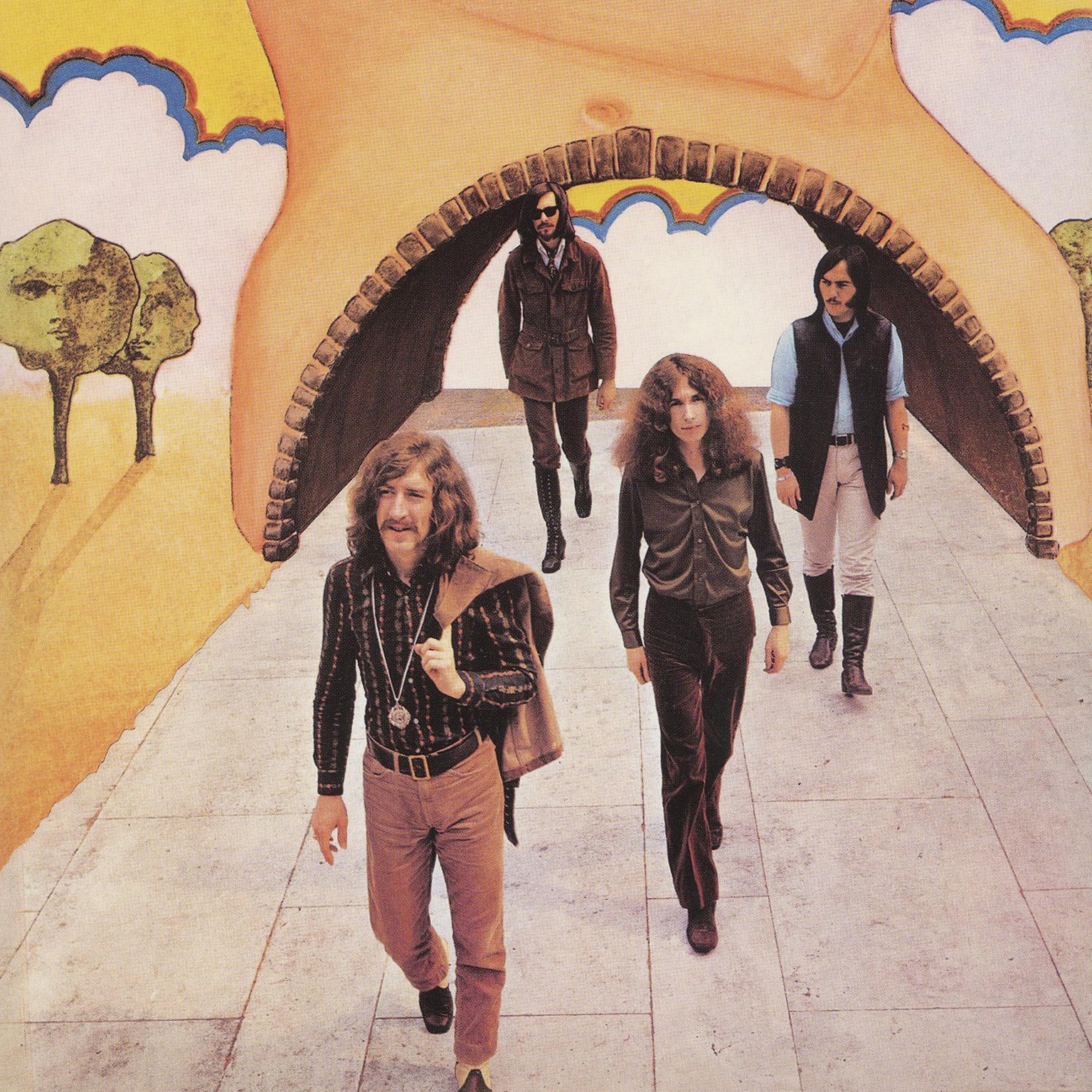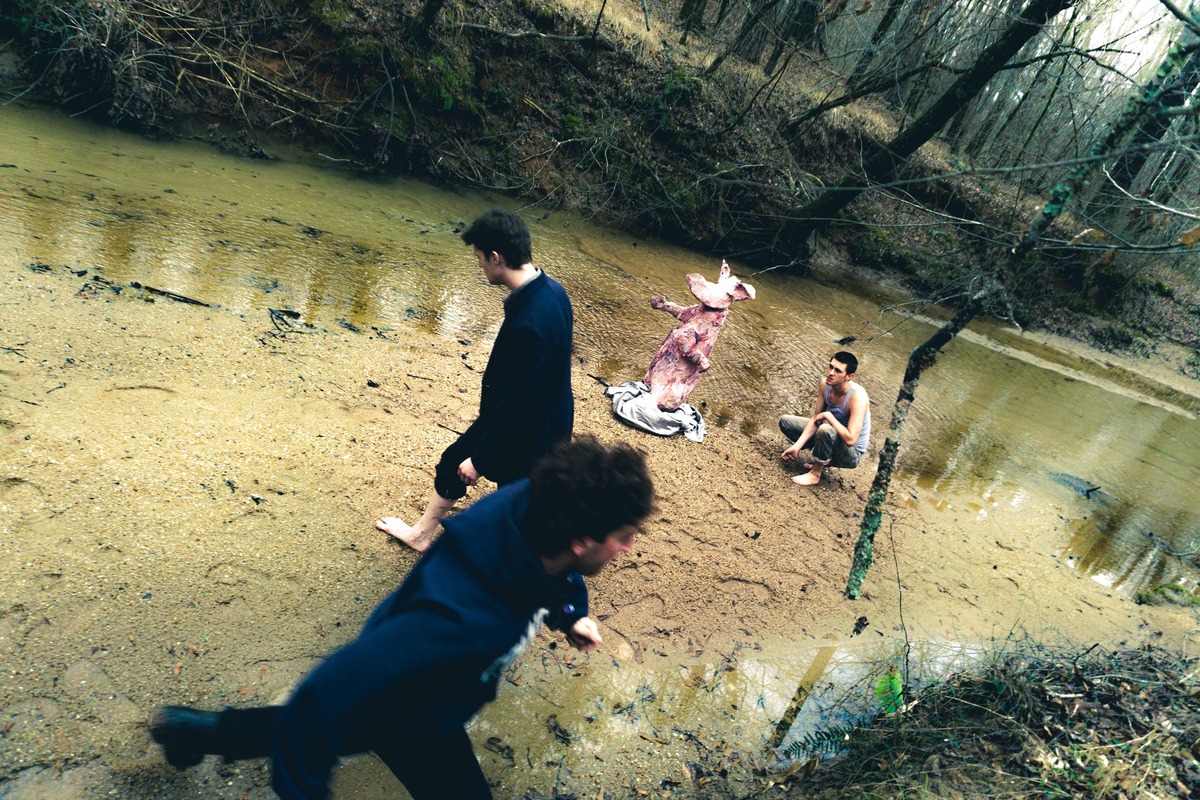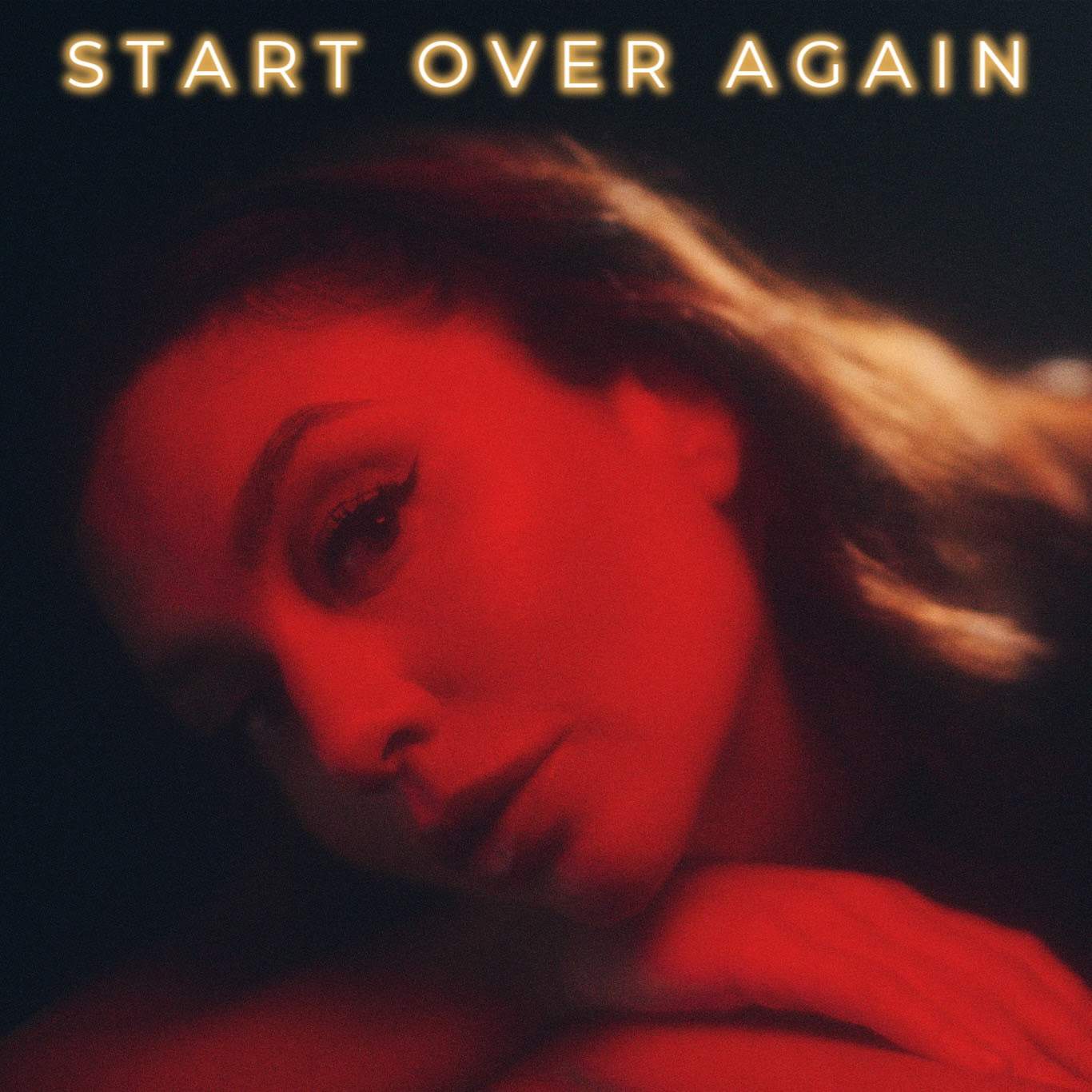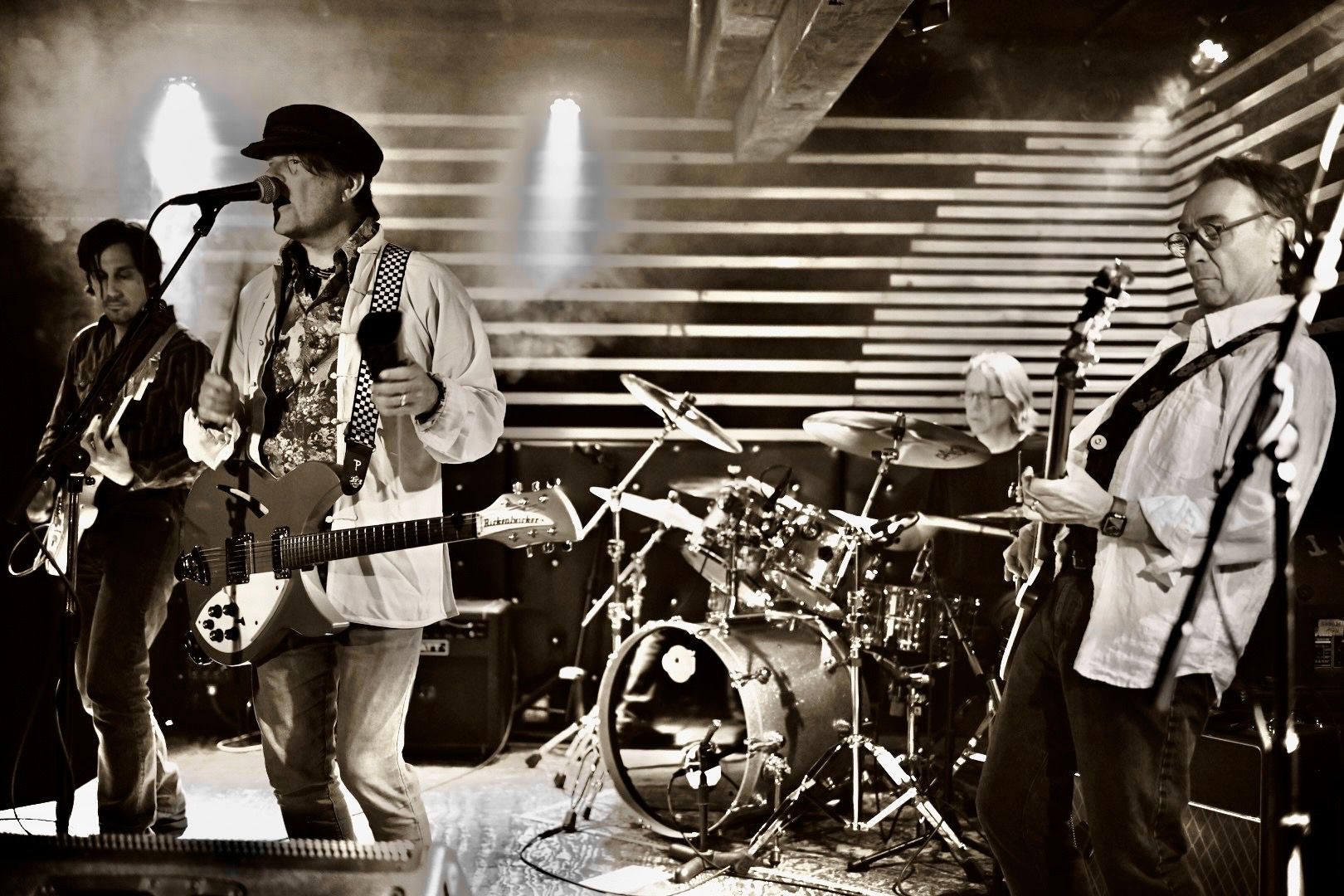Blonde On Blonde | Interview | David Thomas
Blonde on Blonde epitomizes the vibrant spirit of the 1960s British rock scene, characterized by boundless creativity, sonic experimentation, and an unwavering commitment to artistic exploration.
Hailing from Newport, South Wales, the quartet of Ralph Denyer, Les Hicks, Richard Hopkins, and Gareth Johnson embarked on a musical journey that defied conventions. Drawing inspiration from Bob Dylan’s iconic album, they adopted the name Blonde on Blonde, embodying the psychedelic zeitgeist with their guitar-driven symphonies.
Their relocation to London in 1968 marked the beginning of an extraordinary adventure. Fueled by a relentless passion to carve their niche, the band immersed themselves in the capital’s music scene, captivating audiences with their magnetic presence and eclectic soundscapes. With the addition of guitarist Simon Lawrance, their sonic horizons expanded, leading to a collaboration with Pye Records and the release of their debut album, ‘Contrasts,’ a melodic tapestry interwoven with diverse influences.
The end of the 1960s witnessed a transformative phase for the band, marked by personnel changes and a shift towards a raw, rock-centric aesthetic. As Denyer pursued new musical endeavors, David Thomas seamlessly stepped into the fold, injecting the ensemble with renewed energy and an edgier sonic palette. Their sophomore effort, ‘Rebirth,’ showcased their evolution through melancholic ballads, progressive rock odysseys, and electrifying guitar anthems.
Yet, like many narratives in rock history, Blonde on Blonde’s journey was not without its challenges. The departure of Richard Hopkins signaled a poignant moment, yet it also paved the way for Graham Davis, whose contributions enriched the band’s final opus, ‘Reflections on a Life’. Despite critical acclaim, commercial success remained elusive, prompting the band to bid farewell to the limelight in 1972.
Nonetheless, the legacy of Blonde on Blonde endures as a testament to their boundless creativity and unwavering spirit. Their contributions to the world of music, commemorated in the enduring memory of Ralph Denyer, Richard Hopkins, and Les Hicks, shall echo throughout eternity.
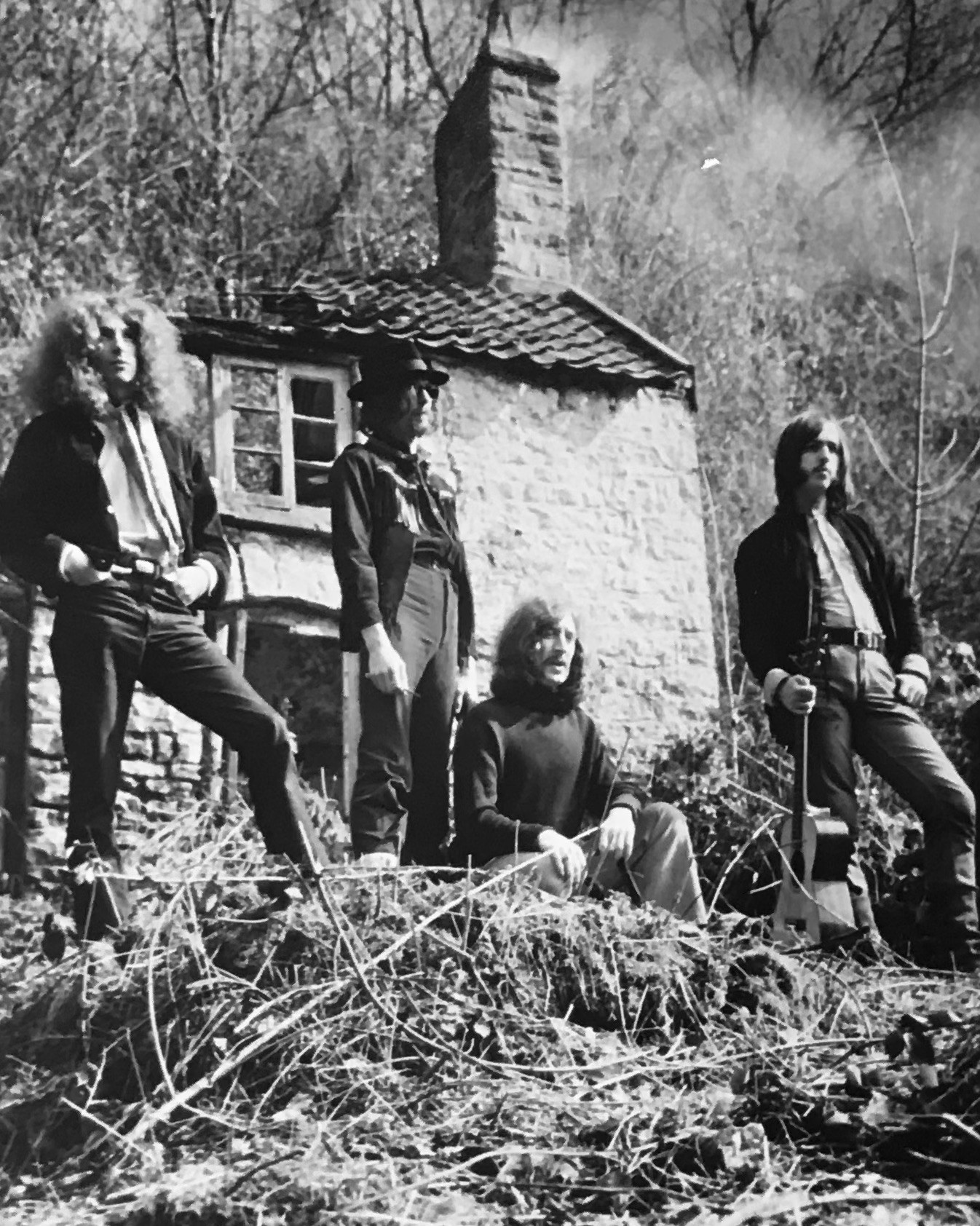
“We didn’t see ourselves as a singles band”
It’s wonderful to have you. You have been recording with Dave Greenslade under the moniker of ‘G & T’. When did you originally meet, and what can you tell us about the project?
David Thomas: Dave Greenslade and I met in 2015. He came along to a show I was playing at the Fisher Theatre in Bungay, his hometown in Suffolk, UK. He liked the sound of my voice and my guitar-playing, so after the show, he said he’d like us to do something together. That conversation was the start of a great friendship. We were both pretty busy at the time, but we started to get together on a regular basis in 2015. Usually, we would meet at his favorite local pub in Bungay – The Green Dragon. The combination of good conversation and good British ale seemed to inspire both of us, so we agreed to start writing together. It wasn’t until the end of his last European tour with Jon Hiseman’s Colosseum that we could really get down to work. I think it was 2016 before we really got going on our joint project. At first, it was a case of finding the best way to work together.
Dave Greenslade started his career playing jazz, and I started mine playing blues. Jazz and blues can overlap perfectly well, of course, but our skills and approaches are quite different. Dave’s approach is highly creative and remarkably structured. My approach is much more reliant on gut-feel, emotion, and improvisation. At first, I found it quite terrifying because I thought he might expect me to be able to play complex chords and progressions along with him. He reassured me that he wanted me to play in my natural style so that the combination of our different styles could work together in a fluid way. At the beginning, he would often present me with chord structures and an idea of progression, and I would improvise on guitar. I also found myself writing song lyrics to complement his music. This worked well enough, but we quickly established a real musical conversation that resulted in some songs being written by both of us spontaneously.
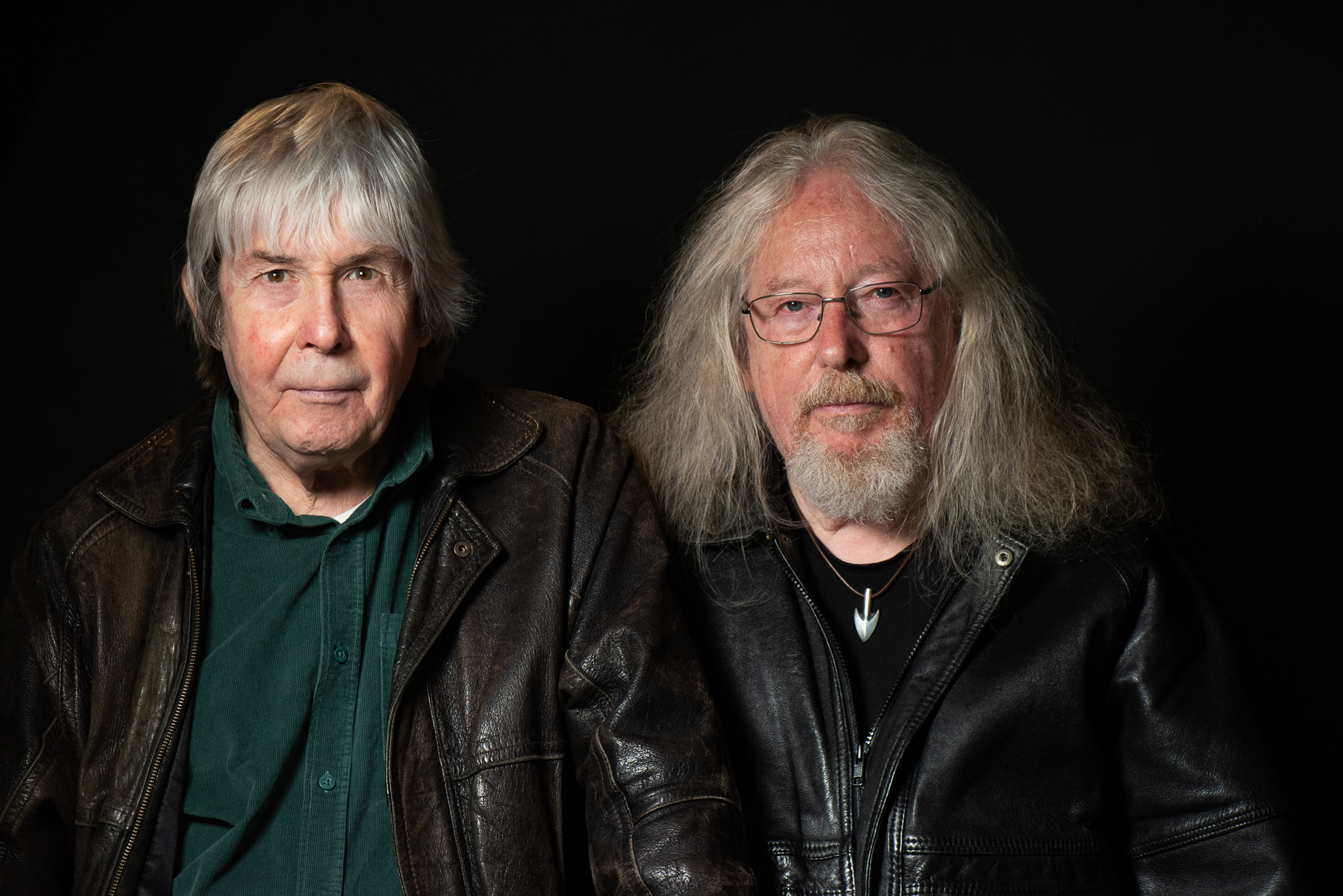
Because of our various commitments, it took a long time to complete the material for our first album. I think it was the best part of five years. The process speeded up organically towards the end. We had achieved a quality of easiness between us. The songs on the album are really quite unique. They could only have been written by us two old-stagers. The album as a whole is hard to categorize. It’s a mix of blues, jazz, and rock. The songs are all quite different too. Some are about my experiences in the USA, and these tend to be bluesy in feel like the opening track, ‘She Wants To Talk To You’. Some of the songs are quintessentially English. ‘Freefall’, for example, is an elegy for my father who was in the Royal Air Force during the Second World War when he was stationed in Cambridgeshire and Canada where young pilots were being trained for the Battle of Britain. ‘Green And Pleasant Land’ begins in England and ends in Spain during the Spanish Civil War. ‘Last Tango’ is also Spanish in focus and in style with touches of Flamenco guitar coloring it.
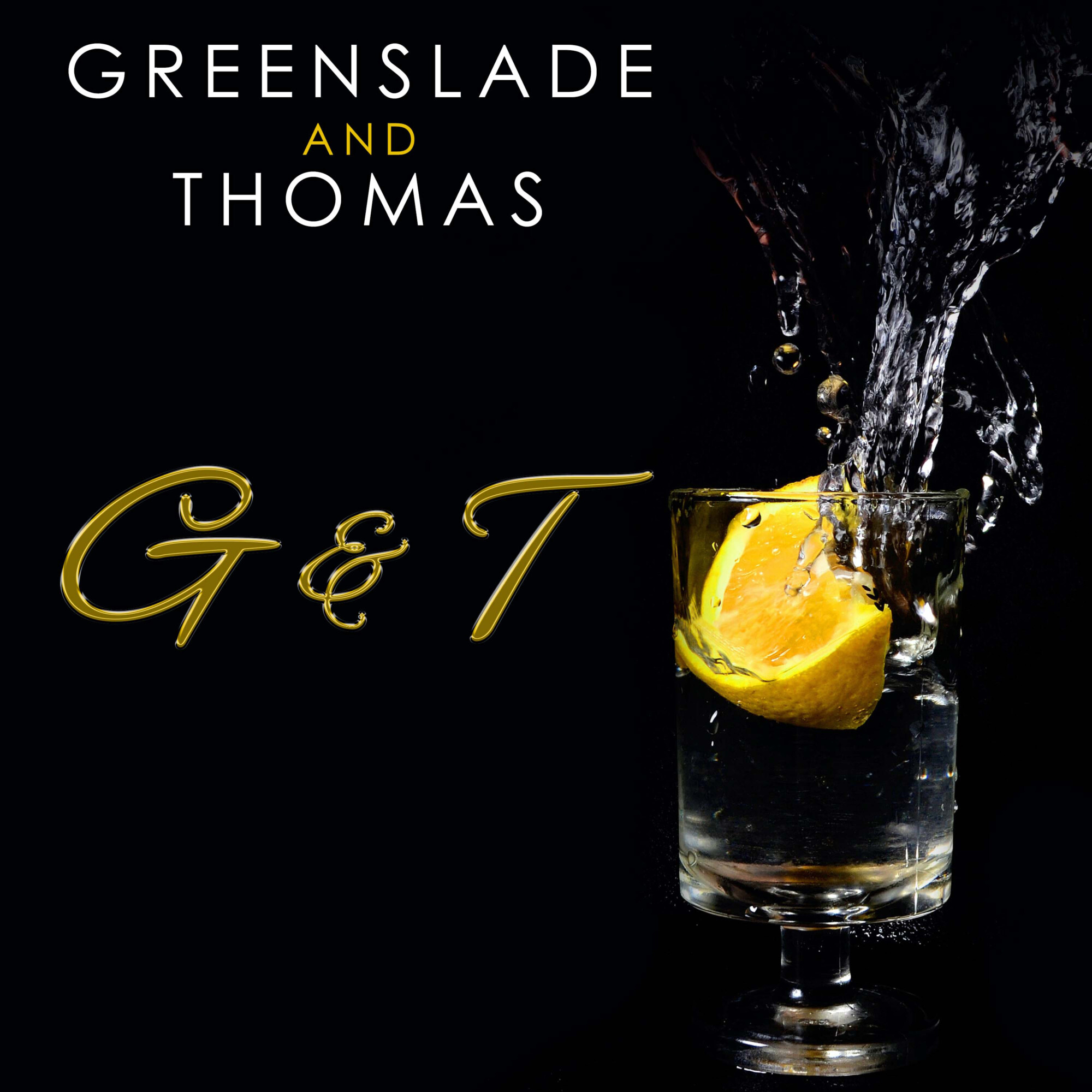
Angel Air recently published your collaborative album, and you’re already working on a new one. Would you mind taking some time to discuss the songs and the story behind it?
We signed a record contract with Angel Air for the ‘G&T’ album. Angel Air sold their entire catalogue to a bigger label called Cherry Red. We have only just begun to get to grips with writing songs for our second album, so it is too early to attempt to describe the story behind it, except to say that we both loved working on the first album so much that we are determined to produce something extra special. I played my last concert of the year at the end of November. We will be getting together to review some songs already written and plan to get back to work in January 2024.
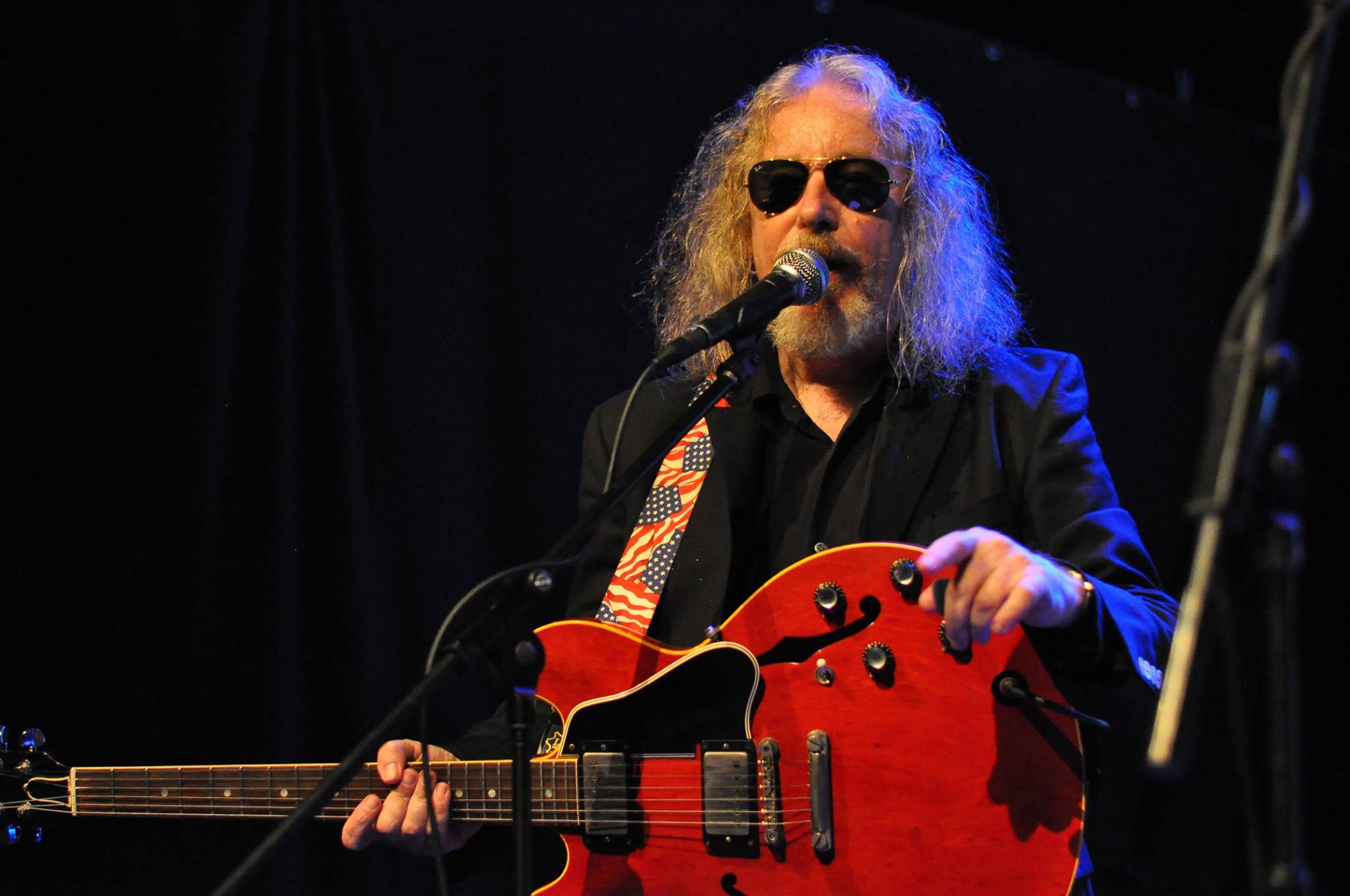
Would you like to share about your upbringing? Where did you grow up? Tell us about daily life back in your teenage years.
I was born in 1951 and raised in Newport, South Wales, a significant industrial port and center for heavy industry. Coal, iron, and steel were produced in South Wales and shipped worldwide from Newport Docks. That’s where my mother grew up. She was the youngest of 13 children, with 10 older brothers. It was much later that I discovered the brothers formed a male voice choir, so I guess music was in my blood. I first began singing in Sunday School at my local Baptist Chapel, and the encouragement I received gave me the desire and confidence to continue. The connection between hymns and gospel songs provided a bridge to the blues for me. I formed my first band when I was only 13 years old. My father and mother loved music from the forties and fifties, particularly big band music like the Glenn Miller Band, and crooners such as Al Bowlly and the legendary Hutch, who was a favorite of the then Prince of Wales, later King Edward VIII.
I taught myself to play the harmonica when I was 7 years old. I first heard the blues at 12 years old, and by 13, I had my first guitar and soon formed my first band, Skid Row. We played music by the Rolling Stones, Jimmy Reed, and Howlin’ Wolf. The best blues band in South Wales was The Cellar Set, also from Newport. They played songs by Howlin’ Wolf, Elmore James, and Chuck Berry. Though they were 5 or 6 years older than me, they encouraged me by letting us play between their sets at some local gigs. That was my first inspiration to become a blues musician. The Cellar Set moved to London to become fully professional as the newly named band, Blonde On Blonde. Their first singer was a guy called Ralph Denyer. When he decided to set up his own band shortly after the release of their first album ‘Contrasts,’ they offered me the job as the new lead singer. I was just a couple of weeks away from going to university, but it was a no-brainer. They were already recognized as a seminal progressive rock band by 1969 when I joined them. I spent over three years on the road with them, recording one single and 2 albums before they disbanded. We mainly played on the college and club circuit alongside some great bands like Genesis, Deep Purple, Wishbone Ash, and The Steve Miller Band. The real highlight was when we were supported at the Keighley Festival by none other than Fleetwood Mac!
Was there a certain scene you were part of, maybe you had some favorite hangout places? Did you attend a lot of gigs back then?
I was a teenager during the era of Rock’n’Roll, so there were Teddy Boys about, but luckily they seemed to like dancing to our music. That segued into the era of Mods and Rockers before we all became Hippies during the Summer of Love in 1967. I was on the fringes of the Handpost Gang, who were starting to get into the blues through listening to John Mayall and the Bluesbreakers. During the mid-sixties, I got myself to the Colston Hall in Bristol to see a lot of touring American jazz and blues musicians. These included Dave Brubeck and the Modern Jazz Quartet, Coleman Hawkins, Louis Belson, and T-Bone Walker.
There were also local gigs at Newport Athletic Club and smaller gigs in my hometown of Newport, mostly in church halls. With Skid Row, I played in venues in Newport Docks and also in the mining valleys of South Wales: Baptism by fire!
I graduated to playing clubs in Bristol, one of which, The Dugout, was alive with Rhythm & Blues.
Was there a certain moment when you knew you wanted to become a musician?
Yes, it was when Gareth Johnson passed me his blonde Harmony guitar on stage at a Cellar Set church hall gig and allowed me to use it with my own band, Skid Row, during their break.
Were you in any bands before joining Blonde on Blonde?
Yes, I was in Skid Row and the Modern Blues Quartet, a band I formed with Gareth Johnson before we departed to join the others in London.
Tell us about Skid Row. Who were the other members of the band, and did you play a lot of gigs? Are there any recordings of the band?
Skid Row was my very first band. We played early Rolling Stones material and lots of Jimmy Reed. I was only 13 at the time, but we performed in some wonderfully unsuitable venues in the dock area of Newport and in clubs up the valleys.
I am still in touch and close friends with two of the band members, Steve Ralph (guitar) and Greg Evans (drums). Our bass player was a lovely guy named Nigel Mann.
What would you say were some essential blues records back then?
Some of the earliest records that resonated with me were by rock ‘n’ rollers, such as Jerry Lee Lewis, the Everly Brothers, Buddy Holly, Little Richard, and Bo Diddley. A particular favorite of mine was ‘Memphis Tennessee’ by Chuck Berry. From there, I transitioned to the blues. I recently discussed this with Gareth Johnson, and we both agreed that the single most important album was ‘Live At The Regal’ by B.B. King. Everything seemed to come together, and it gave us something to aspire to. Other blues favorites included Howlin’ Wolf, Elmore James, Jimmy Reed, Memphis Slim, and John Lee Hooker. In the UK, we also had the wonderful John Mayall and his Bluesbreakers.
Were you familiar with Blonde on Blonde before joining them?
The Cellar Set, who later became Blonde On Blonde, used to rehearse in the upstairs room of a pub in Newport that my mother and father frequented. They introduced me to Gareth Johnson, Richard Hopkins, Les Hicks, and Keith Milne. The Cellar Set invited me to come along to some of their local gigs and encouraged me to put my first band together. Little did I know that I would become Blonde On Blonde’s lead singer just a few years later.
Tell us more about the formation of the band.
The Cellar Set decided to make the move from Newport to London. All four of them were keen to turn professional and knew that a move to London would be the best way forward. Singer Keith Milne, drummer Les Hicks, and bassist/organist Richard Hopkins made their first move, and guitarist Gareth Johnson joined them soon after. In London, they changed their name to Blonde On Blonde and recruited Ralph Denyer as their singer. They played clubs such as Middle Earth and quickly established a reputation on the London scene. Helped by producer Barry Murray, they signed to Pye Records and released their first album ‘Contrasts’ in 1969.
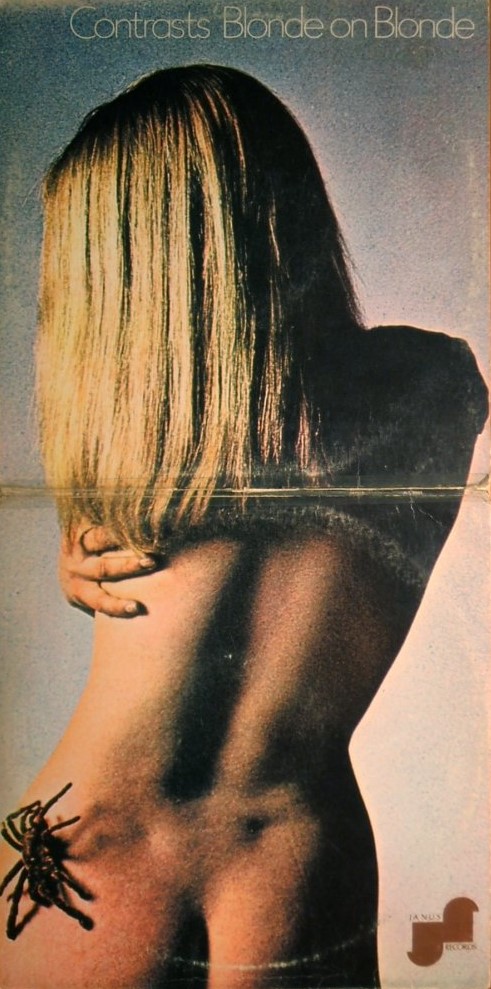
When Ralph Denyer decided to move on and set up his own band, Aquila, Blonde On Blonde had to look for a new singer. They decided their best option was to recruit me, Dave Thomas. Before Gareth left for London, he and I had worked in our band, the Modern Blues Quartet. That had convinced him that my voice was a powerful one, and it didn’t take too much to persuade the other guys to take me on board. Keith Milne had already decided to return to Wales, not wishing to pursue music as a profession. I remember meeting Sally Oldfield (Mike Oldfield’s sister) who had sung with the band for a short time before I joined. Another big decision was that the band should return to South Wales because it was a lot cheaper to live there than in London. It was also a useful place to rehearse, and we found a great little church hall in the countryside so that we could focus on rehearsing for the band’s second album, ‘Rebirth’. I joined the band in 1969, shortly before Blonde On Blonde played at the Isle of Wight Festival.
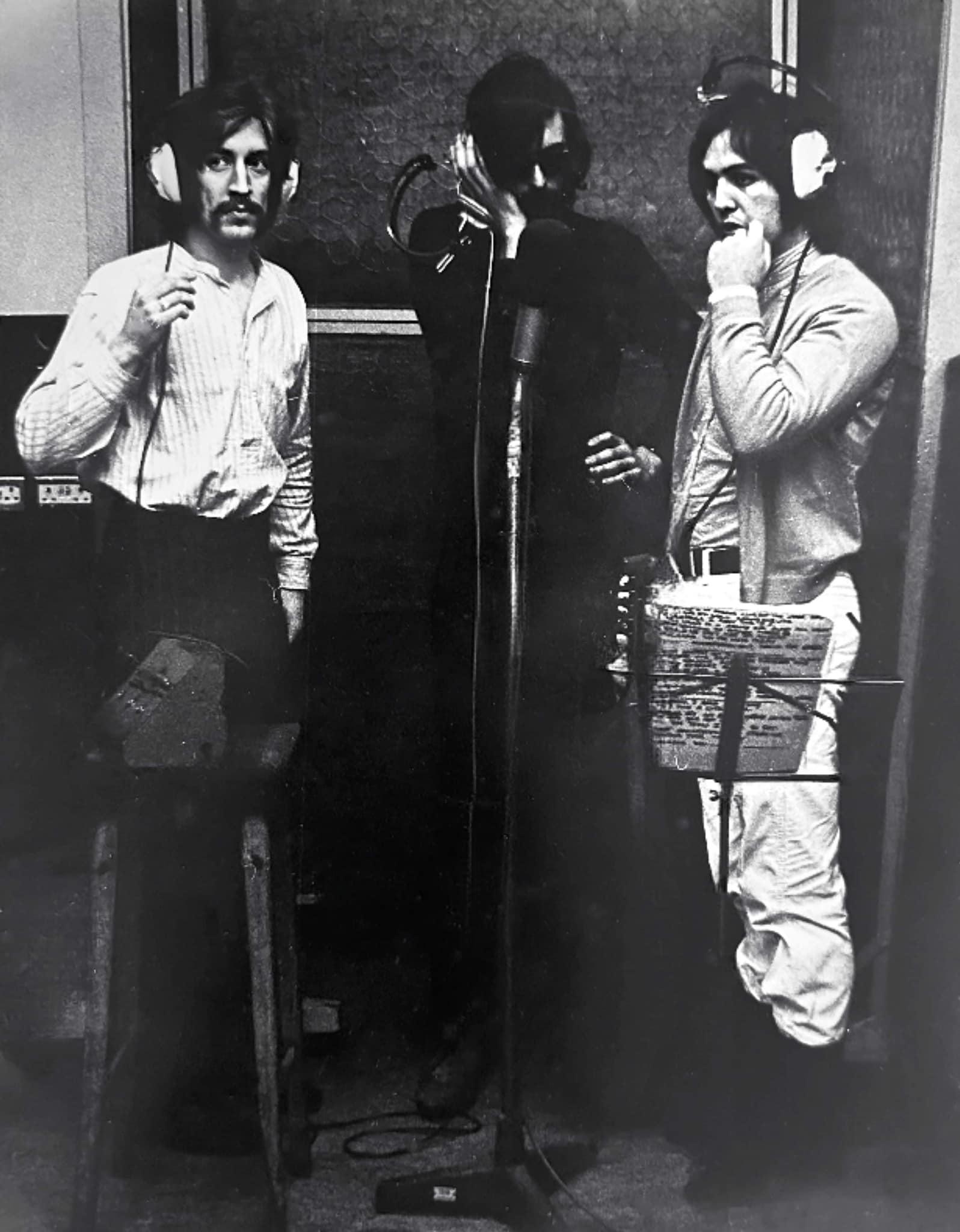
“My main focus was on writing new material”
You played the Isle of Wight Festival? What was that like for you?
The band made the decision to perform at the Isle of Wight in 1969 as a three-piece, primarily instrumental, due to the limited time we had for rehearsals with me as their new lead singer. To this day, I believe this was a mistake. It would have been better if I had appeared with them at the Isle of Wight, but it was not to be. I spoke with Gareth just a couple of weeks ago, and he mentioned that “no-one returned unstoned.”
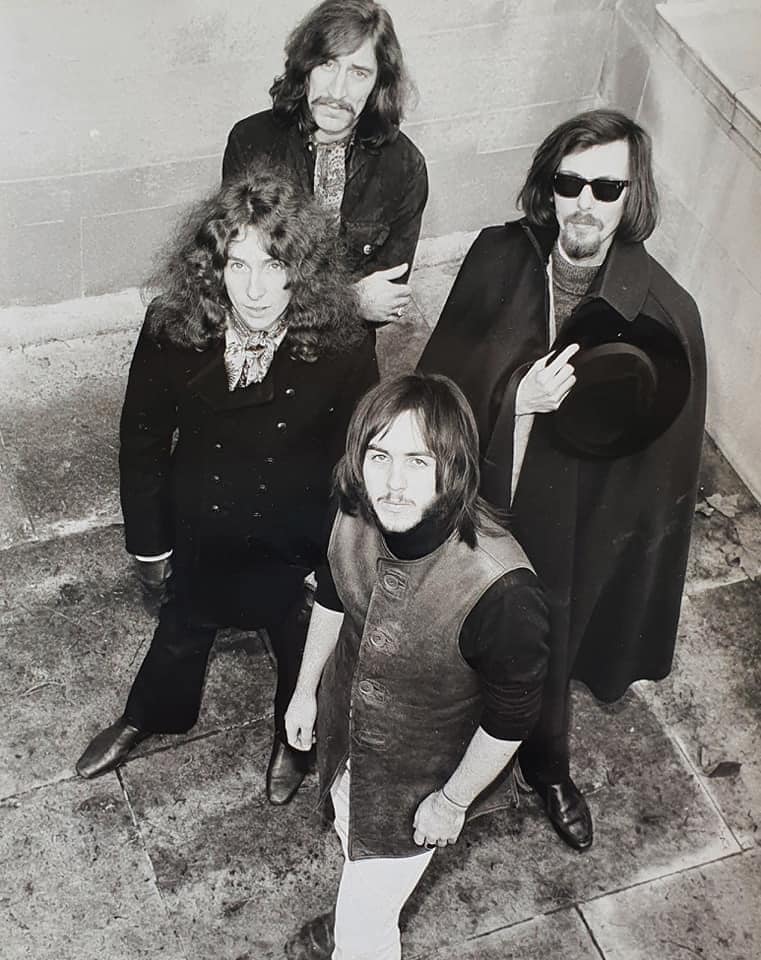
I had joined Blonde On Blonde just two weeks before I was supposed to start my degree course at Leeds University to study English and Philosophy. I was still a clean-cut lad. In fact, all of us in Blonde On Blonde preferred alcohol over other drugs, which set us apart from many of our fellow musicians at that time. My main focus was on writing new material. I wanted to stay straight.
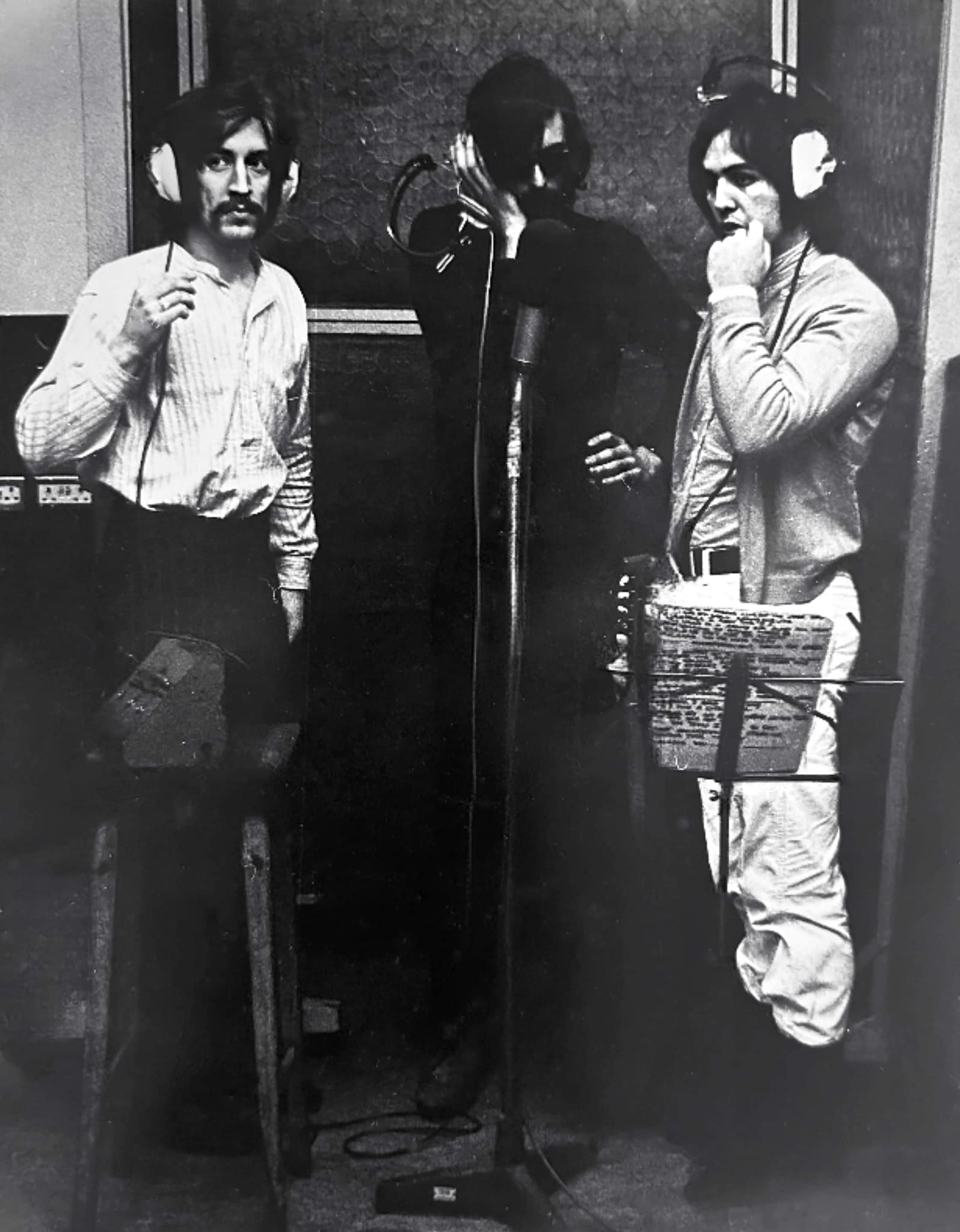
So you played material from their debut album as well?
Yes. There were a few songs from ‘Contrasts’ that we included in the sets for the early gigs that I did with Blonde On Blonde. We used to open up with ‘Ride With Captain Max’. Another favorite song that I really enjoyed singing live on stage from the ‘Contrasts’ album was ‘Mother Earth’. They were both powerful songs and worked well in live performances. I believe my voice suited both those songs particularly well. It’s fair to say that those songs had quite a strong influence on one of my early compositions, which we also introduced into our live sets. That song was ‘Colour Questions,’ which we later recorded for the second album ‘Rebirth’.
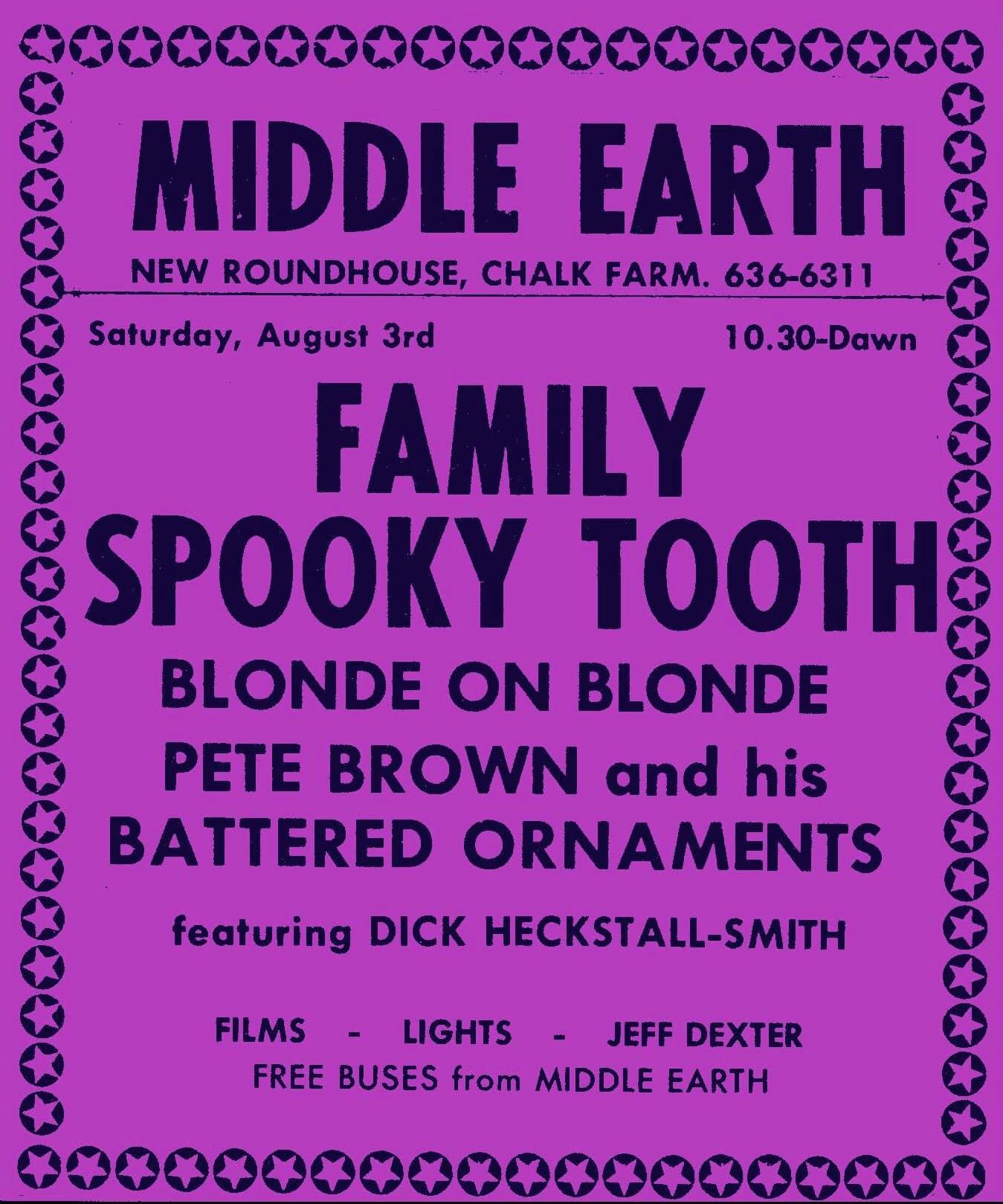
What did you think of singer/guitarist Ralph Denyer’s playing and how did the sound change when you entered the picture?
I admired Ralph Denyer’s singing, but he was more influenced by soul, folk, and pop music. My approach was very different. Firstly, I’m a blues singer, and secondly, I’m a rock singer. On the ‘Rebirth’ album, Gareth encouraged me to use my voice in new ways to suit the songs we were writing together. I do remember a remark made by an opera singer that the band knew. They were convinced that I had operatic training, which was completely untrue, but I could hold a note for a long time if necessary. I also quickly learned to sing loudly because in those days PA systems were generally inadequate, and I was up against a very physical drummer, a lead guitarist, and a bass guitarist who both played at maximum volume. It was a second baptism by fire!
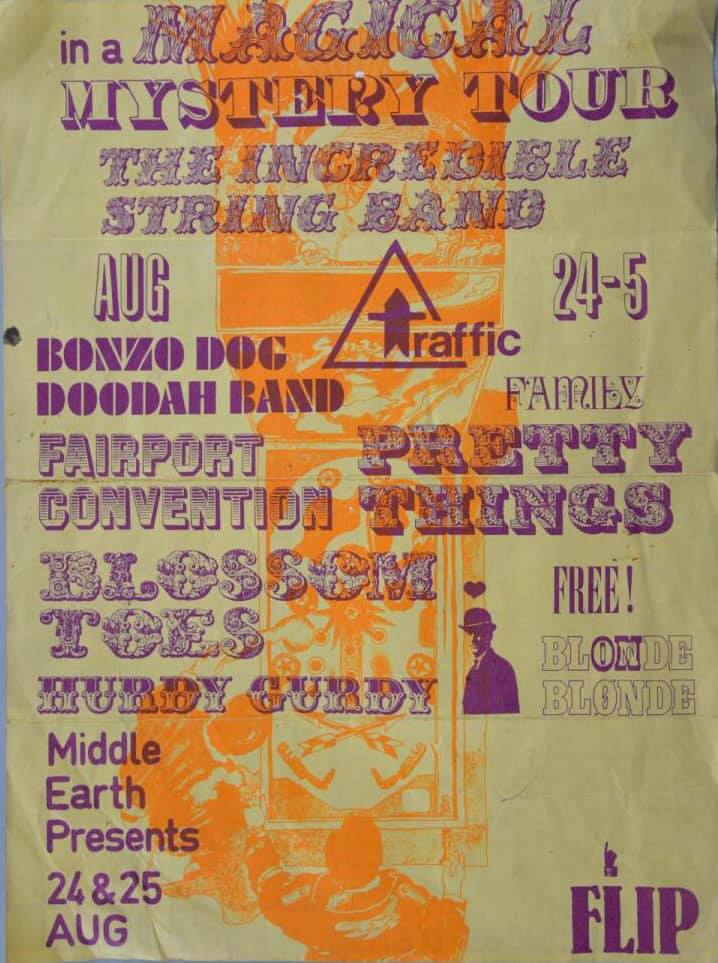
The debut album was released on Pye, while your second album ‘Rebirth’ was issued on Ember Records. How did the contract come about?
Shortly after I joined Blonde On Blonde, we traveled to London to visit Pye at ATV House. Accompanied by our manager Ivor Price, we aimed to renegotiate the contract upon renewal. We sought a fairer share of the action, but Pye was only willing to agree to a slight increase in royalty payments. Soon after, we found ourselves in discussions with CBS, who offered to sign us up for our next album.
Ember Records came into the picture through a BBC producer named John King, who introduced us to them. We had begun collaborating with him on ideas for his upcoming BBC Saturday night television show, ‘Whatever Next’. Ember Records expressed eagerness to get us into the studio sooner rather than later, and we were ready to proceed with recording ‘Rebirth’. When they offered us a better deal, we opted for that. In hindsight, CBS might have been the best option, but Ember seemed highly enthusiastic, and we were enticed by the upfront payment. Additionally, I was impressed by their artist roster, which at the time included B.B. King.

What’s the story behind the ‘Rebirth’ album? Where did you record it? What kind of equipment did you use, and who was the producer? How many hours did you spend in the studio?
‘Rebirth’ marked my first experience in the recording studio. Ember Records arranged the studio bookings. The main studio was a vast space located in Highbury, North London, near the Arsenal football stadium. It was large enough to accommodate full orchestras, although we didn’t require anything of that scale. I recall spending several nights in a nearby hotel, which was quite exhilarating at the time and didn’t afford much sleep. I believe the album was completed over a couple of sessions spanning a few weeks. A significant amount of time was dedicated to the album track ‘Castles In The Sky,’ which was also selected as a single. Additional recording took place at Trident Studios, where Rosetta Hightower was brought in for backing vocals. However, the desired results were not achieved, and her vocals were omitted. Instead, my vocal track took the lead, with assistance from a studio choir we assembled, which even included the tea lady. She complimented my voice, though she remarked it wasn’t as good as Frankie Vaughan’s! I remember sharing the Highbury studio with Robert Fripp, who was recording with King Crimson at the time. It all felt like quite an adventure!
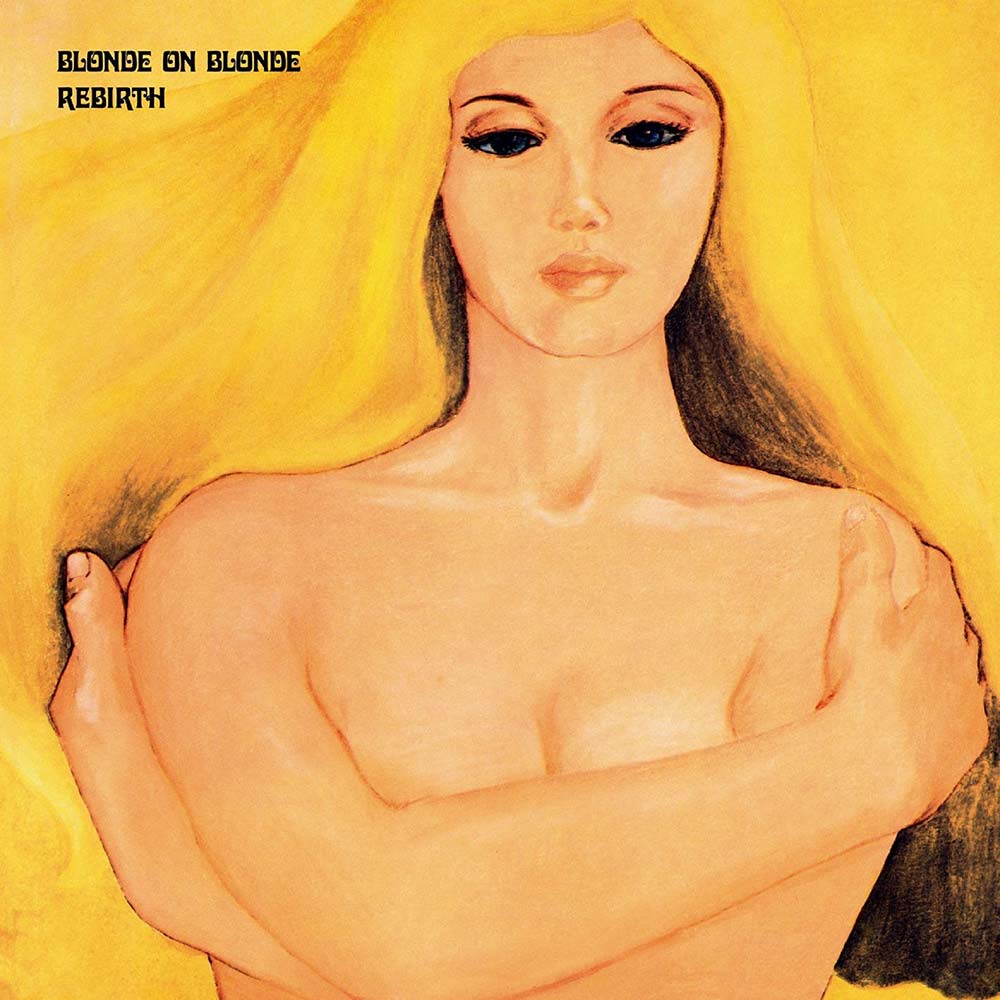
Please share your recollections of the sessions. What were the influences and inspirations for the songs recorded?
The sessions for ‘Rebirth’ were deeply influenced by our return to South Wales for rehearsals, the beauty of our surroundings, and our profound love of nature.
Gareth Johnson drew inspiration from classical music in addition to blues and rock’n’roll. At the time, I was deeply immersed in the works of Wordsworth. The Wye Valley, located just a few miles away, is said to be the place where Wordsworth witnessed his “host of golden daffodils.” While I cannot confirm the accuracy of this claim, being Welsh makes me particularly fond of the idea.
Would you share your insights on the album’s tracks?
Of course.
‘Castles in the Sky’
This song was the only one on the album not written by Blonde On Blonde. We were persuaded to include it by the producer, John King, whose wife, Eve King, had written it with Paul Smith. To be honest, we didn’t like it at all. It felt too commercial and derivative, but for some reason, it was thought to be the best choice for a single. I was only 18, and it was my first time in a studio, so I gave it my best shot. Surprisingly, it became Tony Blackburn’s record of the week on BBC Radio One. My abiding memory is hearing this song on the radio as I walked towards the hospital bed occupied by my father. He had been taken ill shortly after we had dropped him off at work in the bandwagon. When I saw him, he was smiling proudly and talking about his son being a famous pop star to the group of women surrounding him. He was rather more popular than I realized!
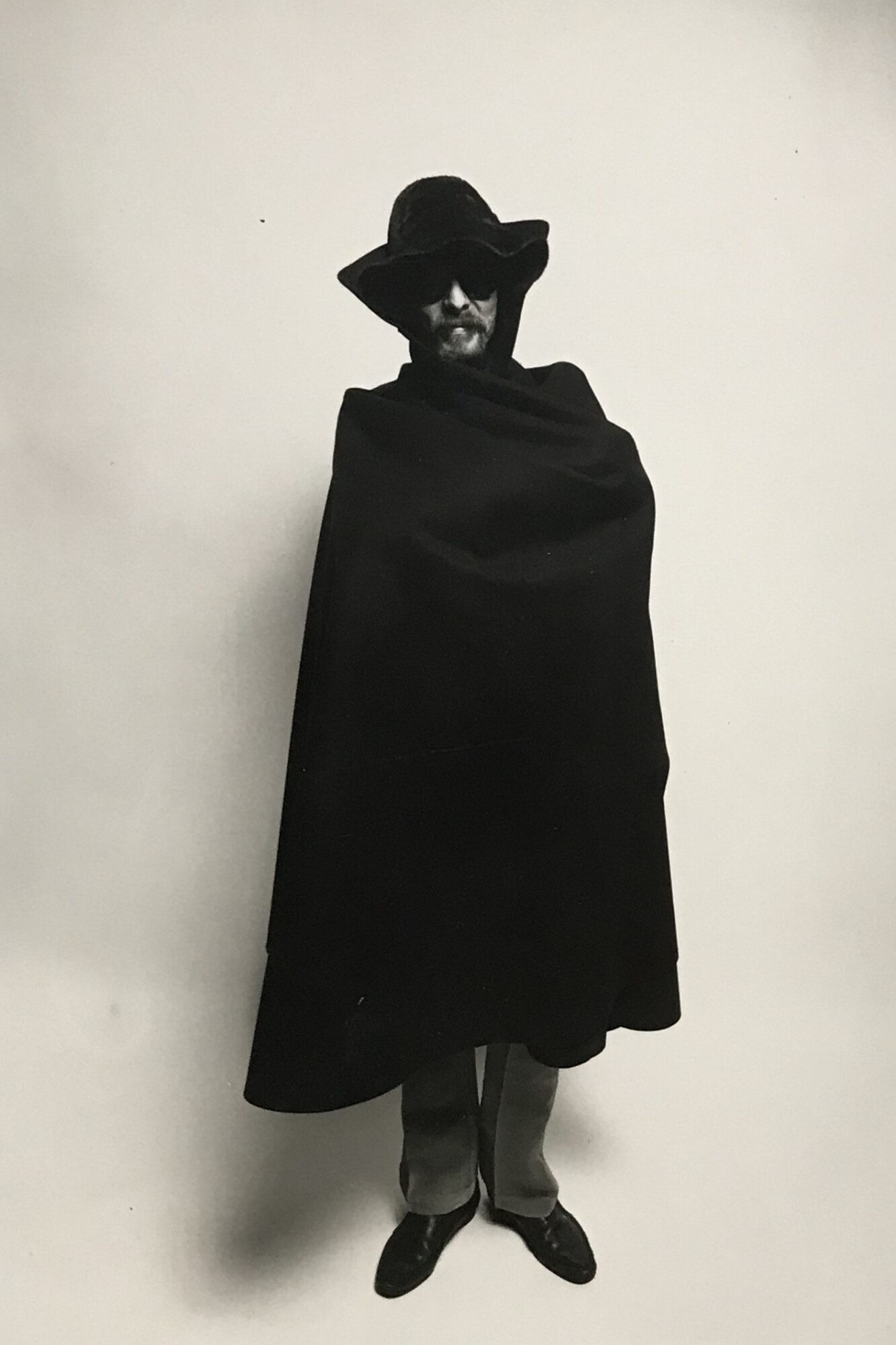
‘Broken Hours’
This was the first song I ever wrote. I have mixed feelings about it now. It’s obviously juvenilia, but there is a disarming sincerity about it.
‘Heart Without a Home’
This was a number we really enjoyed playing on stage. We all thought it should have been the single.
‘Time Is Passing’
The lyrics were written by our drummer, Les Hicks. I worked closely with him to turn it into a song that is focused and compact. Its subject is the futility of war.
‘Circles’
‘Circles’ was really all Gareth Johnson’s work, and great work too. You can hear the classical influence coming through.
‘November’
‘November’ was definitely my own song. It was inspired by my explorations of the hills and valleys of the countryside around me. A band that influenced me and Blonde On Blonde a lot at the time was The Incredible String Band, and in an obvious way, it was a nod to them from me. I particularly loved Robin Williamson’s ‘October Song’. This was also the first time I got to play lead guitar on this album track.
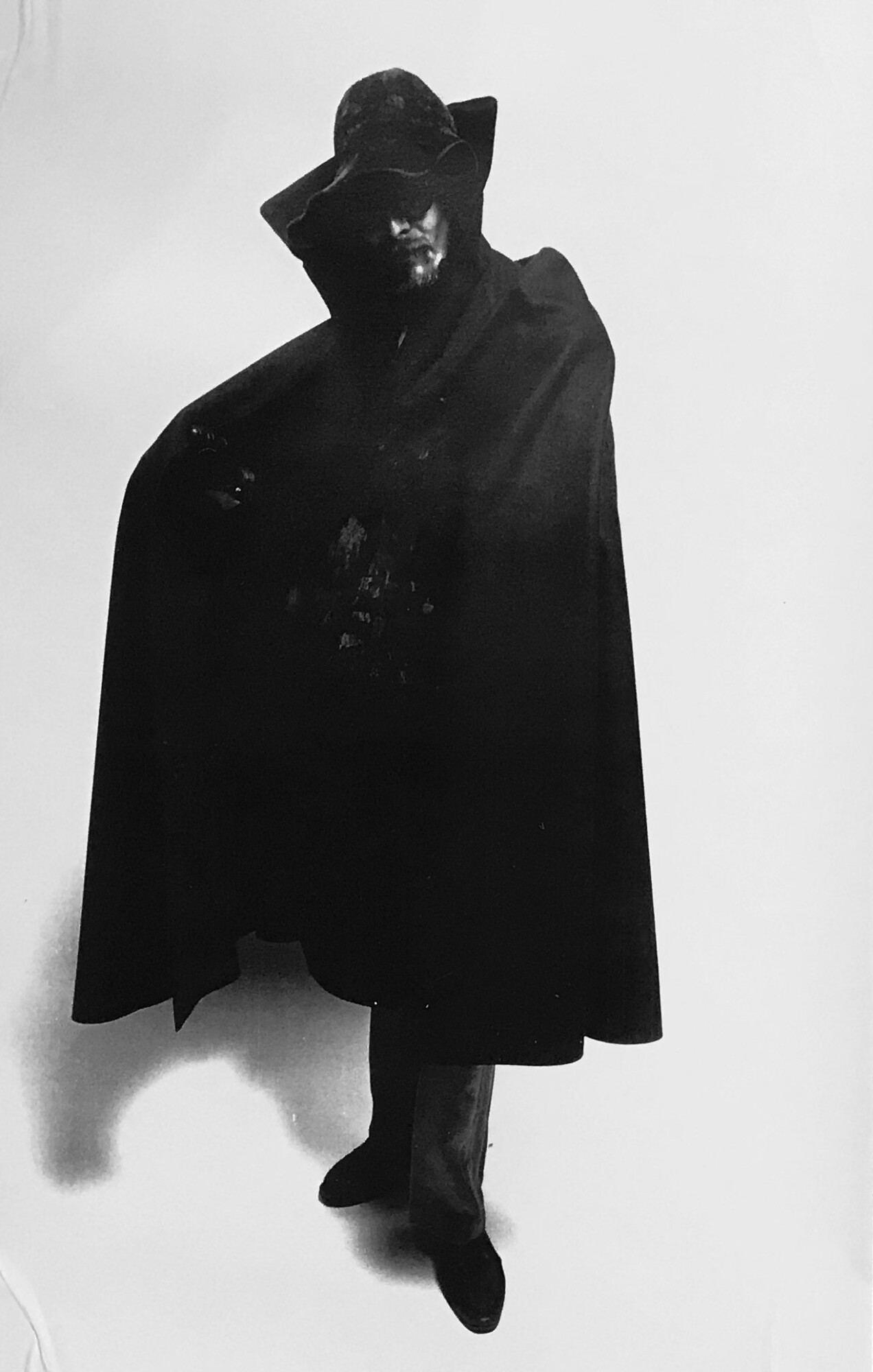
‘Colour Questions’
This was a belting track when we played it live. I have to admit that some of the lyrics do sound pretty pretentious, but again, my disarming sincerity saves the day!
‘You’ll Never Know Me (Part 1)’
Gareth Johnson wrote this.
‘Release (Part 2)’
Richard Hopkins (aka John) wrote this.
I still have no idea exactly what they were trying to achieve, but it seemed a jolly good way to end the album.
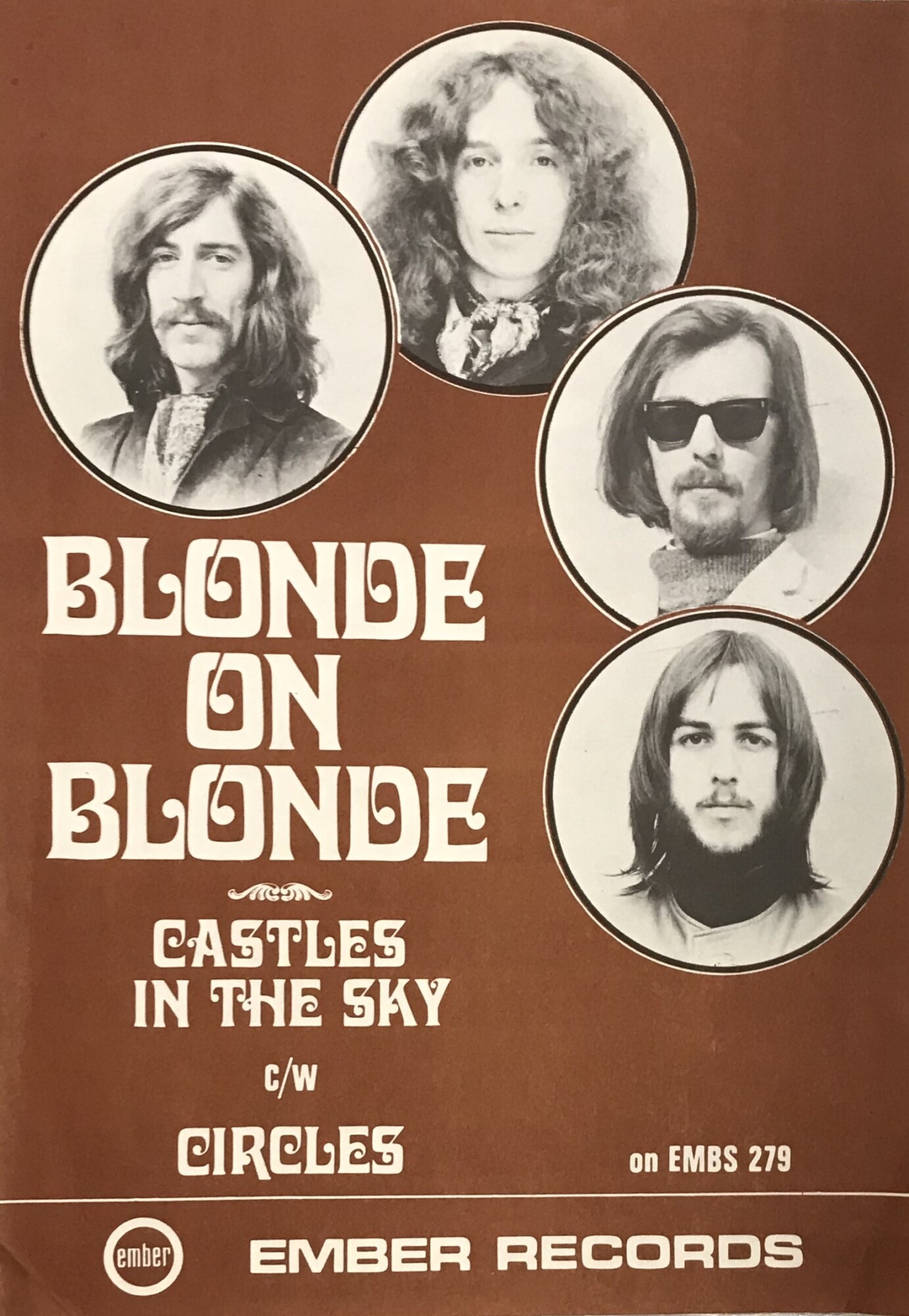
“There was a simple concept behind the album rooted entirely in reality”
Was there a certain concept behind it?
Concept albums were still developing in 1970 when ‘Rebirth’ was released, but there was a simple concept behind the album rooted entirely in reality. The band had undergone significant changes, and with me as their new singer, the idea was to signify Blonde On Blonde’s rebirth.
The album cover for ‘Contrasts’ was exceptionally striking, featuring a blonde naked beauty with an enormous black spider on her lower back. The original concept was for the spider to be blonde, symbolizing the band’s name and the album title in a sharp contrast. However, a blonde spider wasn’t feasible photographically, so the compromise was to use a black spider to illustrate the album title effectively. Alternatively, perhaps a blonde spider couldn’t be found.
For our next album, I embraced the concept of portraying another image of a blonde woman giving birth to the new band. Although this could be achieved with modern computer technology, at that time, it was not available. Thus, we had to resort to using an illustration, which lacked the subtlety of a photograph.”
This version maintains the original content while refining the grammar and flow for clarity and coherence.
Who created the cover artwork?
The album sleeve was designed by Ely Besalel, commissioned by Ember Records. The individual photographs of the band members were taken by Edward St. Maur.
Have you ever experimented with psychedelics?
The closest we ever got to psychedelics was insisting on having two crates of Newcastle Brown Ale as part of our live performance contracts.
What would be the craziest gig you ever did?
There were so many wild gigs it’s hard to pick just one, but if I had to, it would be an Oxford May Ball where we shared the stage with The Pretty Things and witnessed some ladies wrestling in mud. I can’t recall which college it was or the exact date, but it stands out as the first time I had to play bass. Our lead guitarist, Gareth, had collapsed in a drunken haze on the steps leading up to the stage. Gareth always kept us entertained. At one Marquee gig in London, he was spotted lying on his back atop a grand piano, still belting out a guitar solo, while enduring a comical attack by a pair of black, topless hotpants. He was wearing them at the time, and we had to cut him out of them before they shrunk even further in the heat and sweat of the battle.
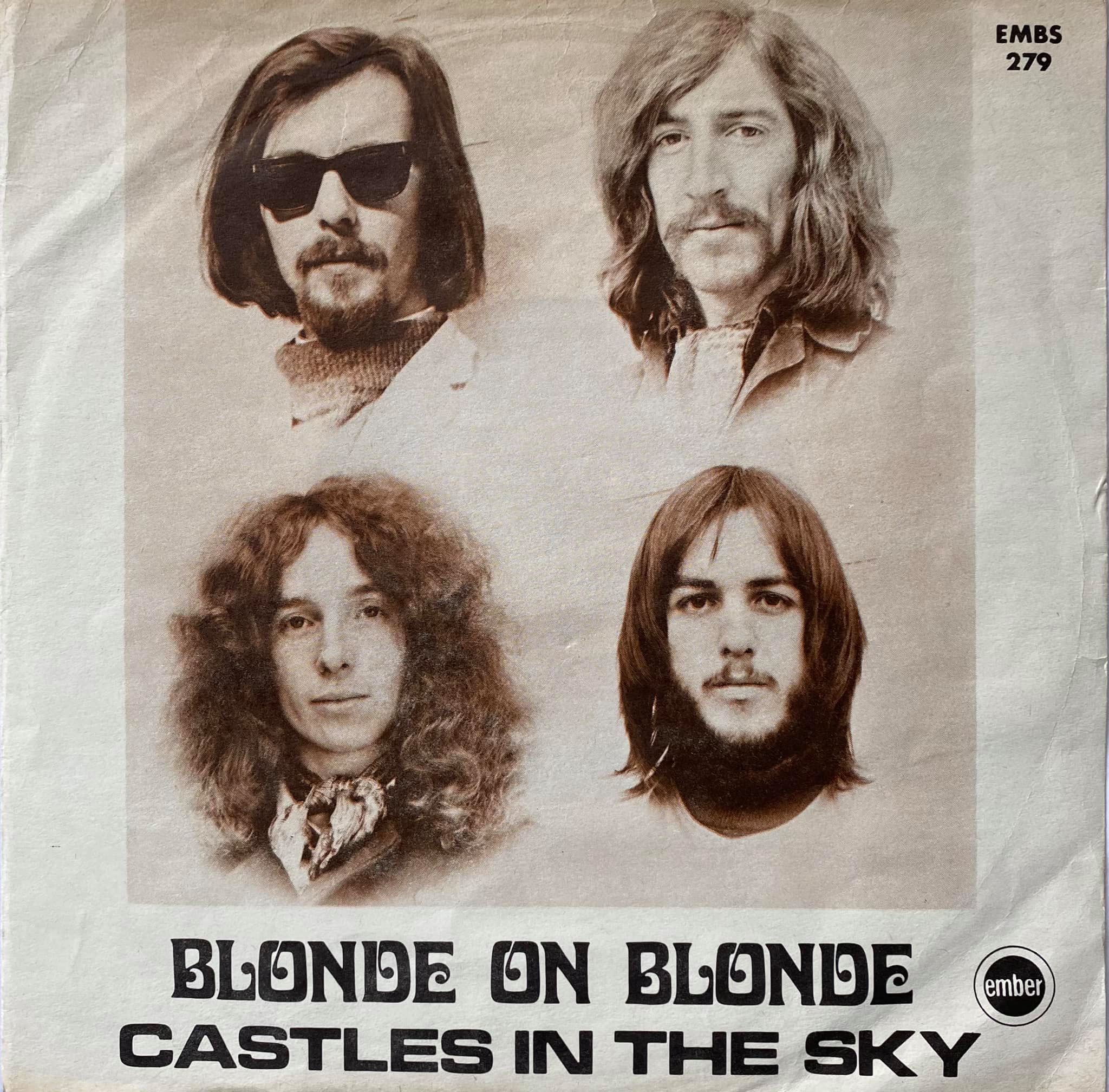
Do you recall the 1970 EP release under the name of ‘Castles in the Sky’ or the 1971 EP ‘Castillos en el cielo’?
I have no recollection of either of the above. I only remember ‘Castles In The Sky’ being released as a single here in the UK. Record companies have a long tradition of keeping the talent in the dark.
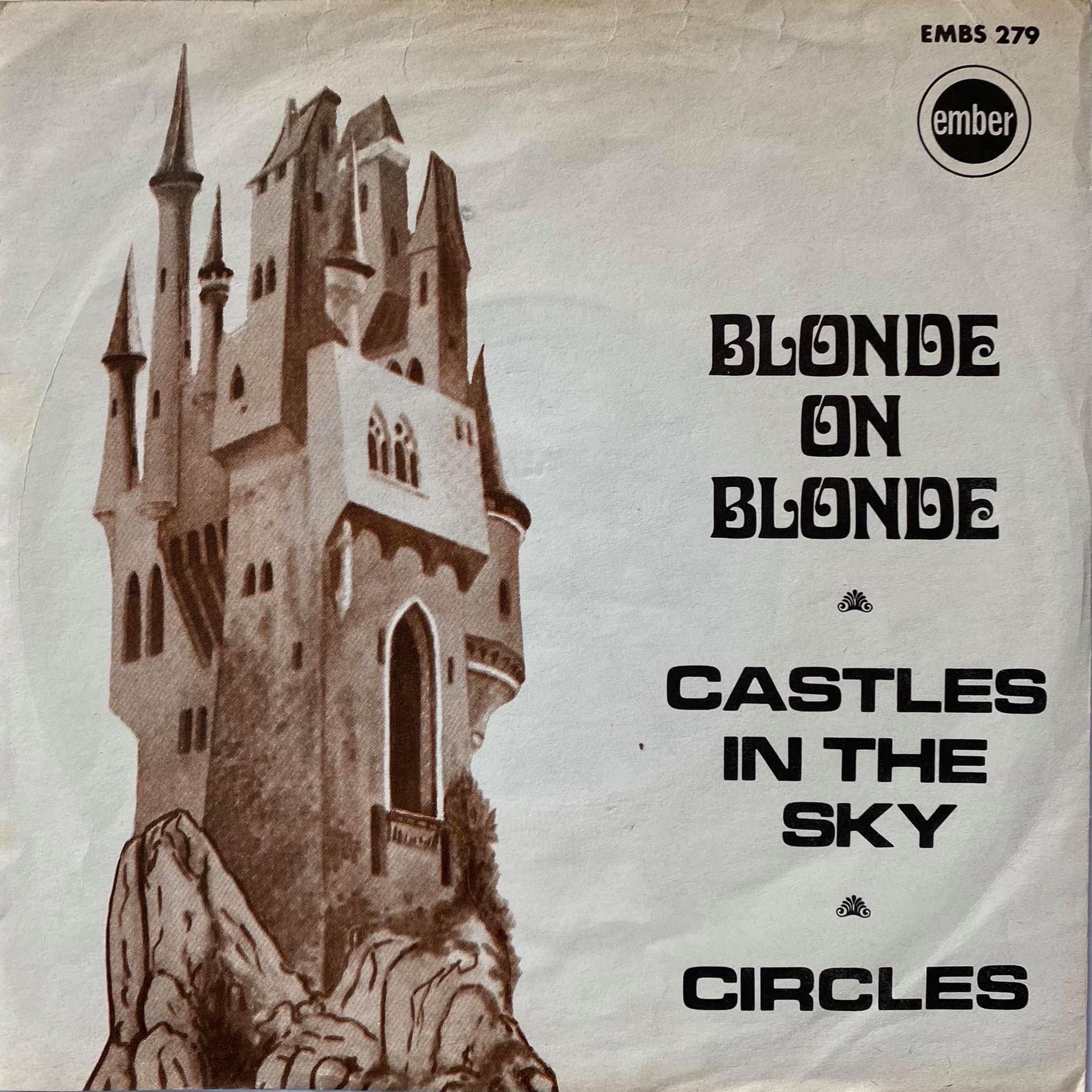
How do you remember working on the third and final release, ‘Reflections on a Life’? Could you please share the story behind it? What was the overall vision?
‘Reflections On A Life’ marked Blonde On Blonde’s third and final album. Initially, the plan was to record a hit single, as per our record company’s wishes. However, tensions were rising between us and Ember Records. We didn’t see ourselves as a singles band, so Gareth and I decided to have a competition: we each attempted to write the worst possible song that could still become a hit and make us all rich. Gareth came up with ‘Happy Families,’ a dark song about a man driven to insanity and murdering his entire family. My attempt was a less glamorous affair, focusing on the taboo subject of incest, although being an only child, it was a topic I knew little about.
Upon hearing our submissions, the record company concluded that neither song was suitable for a single. Consequently, they allowed us to proceed with completing the album. ‘Reflections On A Life’ evolved into a concept album exploring themes of family life and madness. As we delved into the project at Rockfield Studios, it became evident that Gareth was growing disillusioned with the rock’n’roll industry and shifting his focus to structural engineering and architecture. As a result, ‘Reflections On A Life’ featured a significant amount of material written by me and some contributions from our new bass player, Graham Davies.
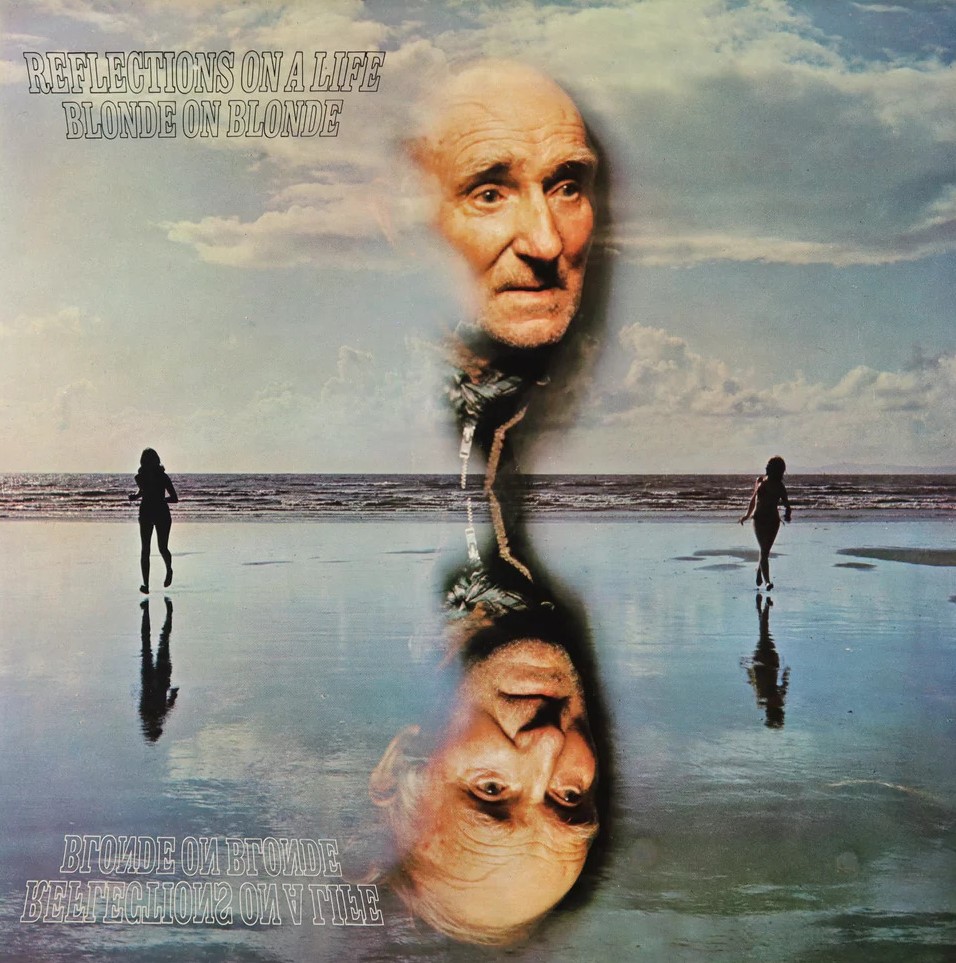
On the farewell tour, I took over the bass while Graham Davies stepped in on lead guitar. Let me tell you about the circumstances that led to the end of the band.
The beginning of the end for Blonde On Blonde started at the Oxford May Ball, although the exact location and date are a bit hazy. After finishing recording ‘Reflections On A Life’ and gearing up for the promotional tour, Gareth announced he had enough. With no time to recruit a new guitarist, Graham Davies stepped up to lead guitar, and I took on bass duties. Juggling bass and lead singer roles was akin to tapping your head and rubbing your tummy simultaneously. How I managed to get through that tour remains a mystery.
Adding to the challenges, a disastrous trip to Belgium for a festival in Ghent put the final nail in the coffin for the bandwagon. We were dead in the water. Gareth moved on to become the UK’s leading authority on Reinforced Masonry Construction.
Despite the end, it was some consolation to know that we had played some fantastic gigs during my three or four years with the band. We shared the stage with the likes of Genesis, Deep Purple, Wishbone Ash, and The Steve Miller Band, often with equal billing, and we held our own. A personal highlight for me was being supported by Fleetwood Mac!
Sadly, Ralph, Simon, Les, and Richard are no longer with us. However, through the medium of recording, we all live on in our music.
Tell us about your move to London in 1972.
When Blonde On Blonde finally disbanded in 1972, I made the decision to move to London and audition for any promising rock bands. So that’s exactly what I did. I relocated to London before the year’s end and auditioned for Robin Le Mesurier’s band Reign as the male lead singer.
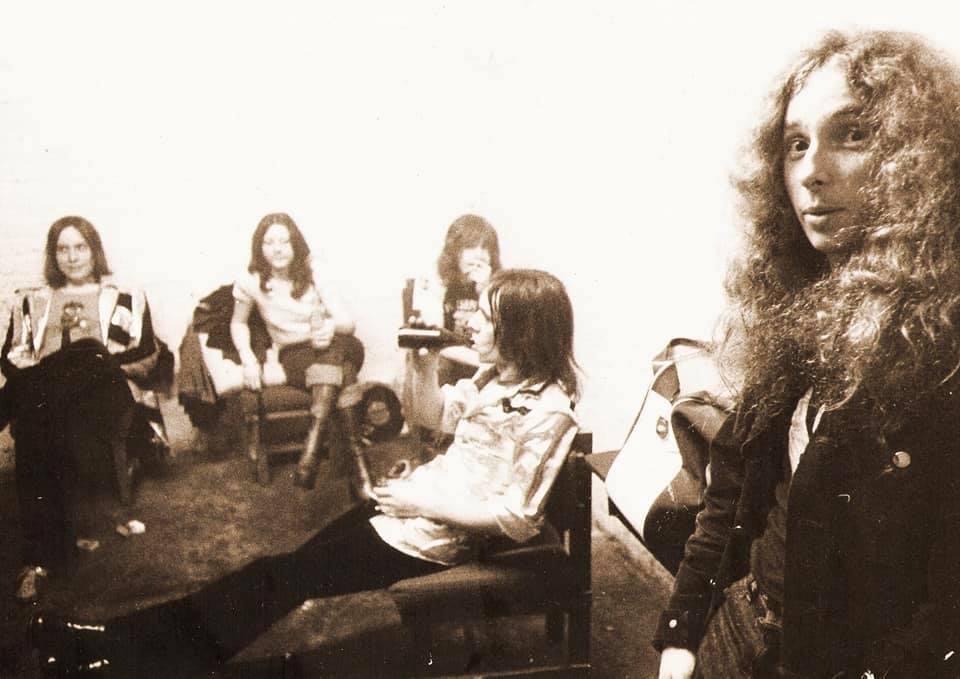
The band also had two female singers, Debi Doss and Shirley Roden, with whom I am still great friends today. I stayed with Reign for about 18 months until Robin came into the rehearsal studio one day and announced that Reign would be rebranded as The Wombles. It might have seemed like career suicide, but at that moment, like Gareth Johnson before me, I had my fill of the rock’n’roll scene. Reign indeed transformed into The Wombles, and Robin went on to play guitar for Rod Stewart and Johnny Halliday. Debi and Shirley joined The Kinks and completed five tours in the USA with them. After a period of working on building sites and packing grand pianos for Harrods, I decided it was time to return to playing the blues while also studying for my degree in Modern Arts.
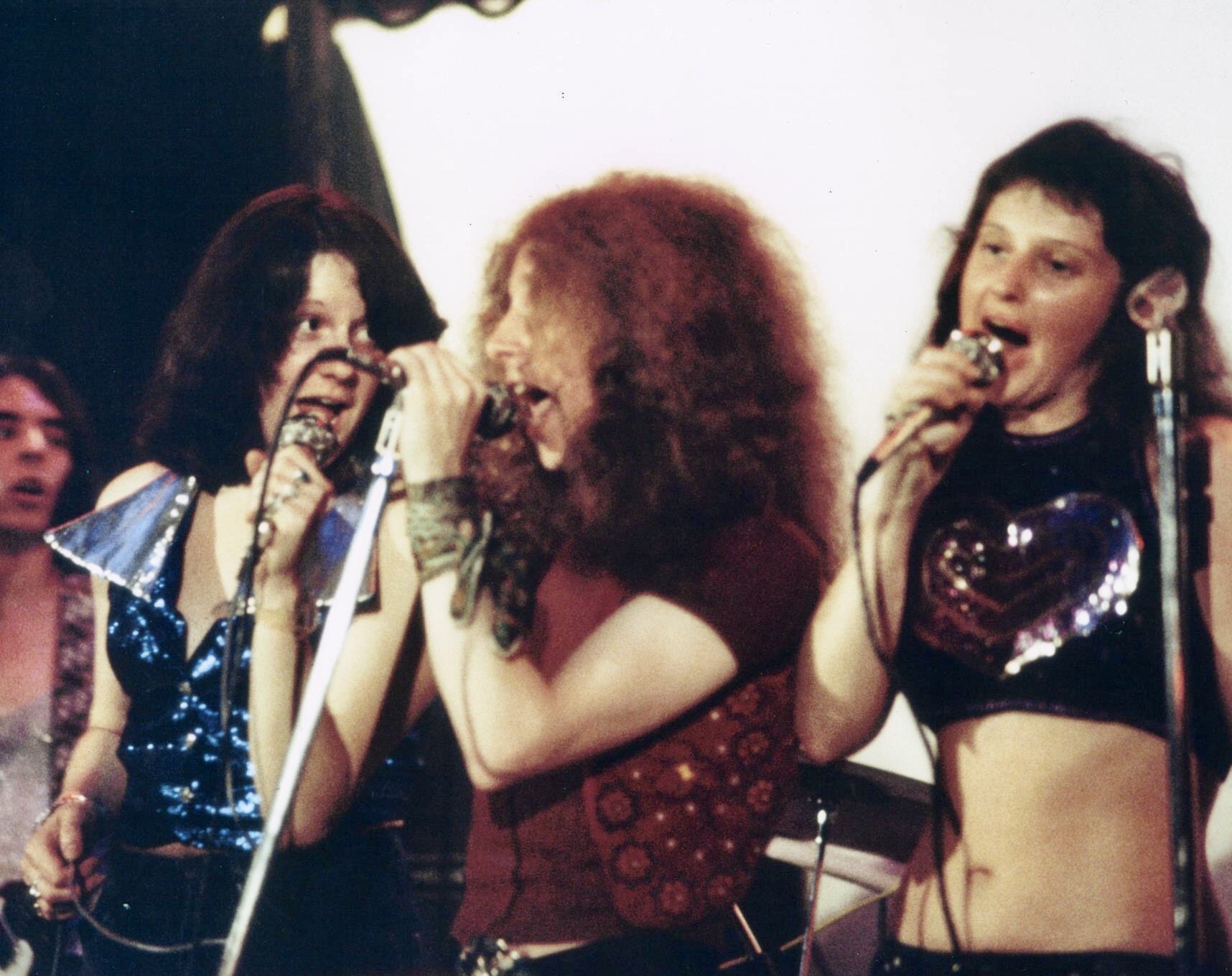
There, you met Hugh Gregory. Together, you formed the acoustic blues duo Shortstuff and played all over the U.K., including the Cambridge Folk Festival in 1977. I would love to hear what your repertoire consists of.
I first met Hugh Gregory shortly after I arrived in London. We both worked on the building sites but soon became great friends when we realized we shared a love of music, especially blues. He was a real Rory Gallagher fan. We quickly got to work on rehearsing regularly so that we could perform as an acoustic duo on the folk circuit. Our repertoire consisted mainly of country blues. We played songs by Sonny Terry and Brownie McGee, as well as Jimmy Reed. These songs were a great vehicle for our acoustic guitars and tight harmony vocals. We also included songs by J.J. Cale and Ry Cooder, whom we had been lucky enough to see when they played in London during the ’70s. We enjoyed some fine adventures driving up and down the country in my old Morris Minor van, playing the folk clubs of Olde England. We did this for over four years and had some magical experiences and a whole lot of fun.
The really good news is that we remained firm friends, and Hugh regularly performs with me and my band still. With him being such a great Rory Gallagher fan, he has enjoyed playing right alongside Charlie McCracken and Brendan O’Neill, who have played with me many times and who both were Rory’s band members back in the day.
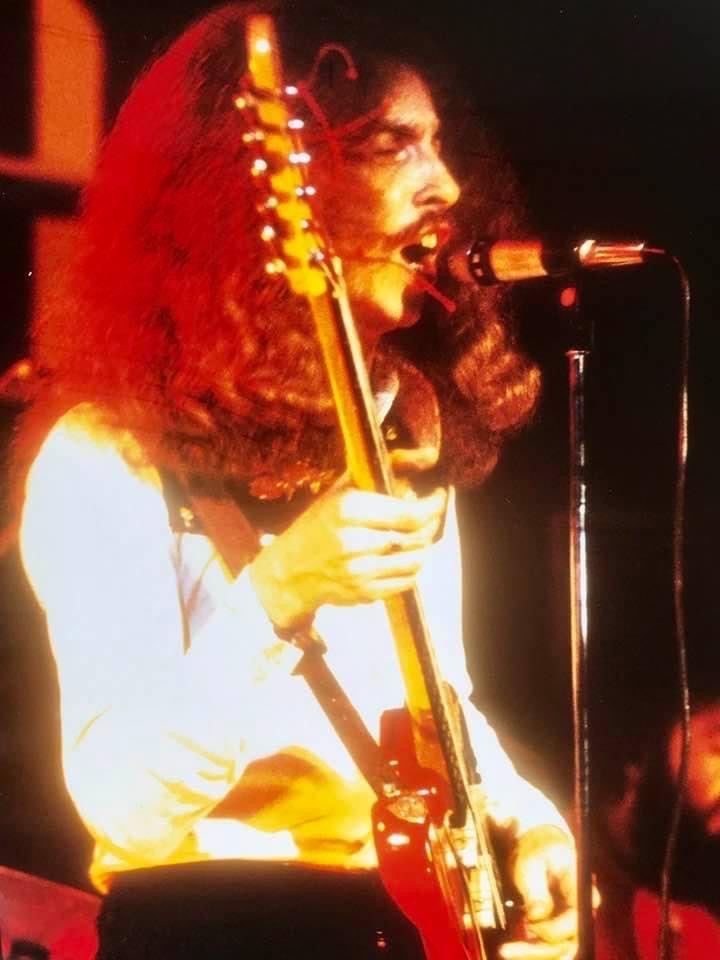
Tell us about The Half Moon in Putney.
Together, Hugh and I were known as Shortstuff. We managed to get a residency at The Half Moon in Putney, where we played regularly over several years. I’ll never forget our first gig there. It was quite a contrast playing in a relatively small venue using acoustic guitars where you were so close to the audience you could see the whites of their eyes. That first gig found me feeling much more nervous than I had ever been with Blonde On Blonde on some of the big stages I had been on. As the lead singer in a rock band, there’s usually some reasonable distance between you and the front row of the audience and spotlights shining on you, blinding you to distraction. This was different. There were three faces I recognized instantly in the front row at The Half Moon, and they were watching my licks intently. Just imagine how I felt when I recognized them as none other than Ralph McTell, Bert Jansch, and John Renbourn.
Shortstuff eventually decided to move on from The Half Moon, Putney, having played several times at the Cambridge Folk Festival and at folk clubs all over England and Wales. There was somebody champing at the bit to take over from us. His name was D.P. Costello (later to become Elvis Costello). I am glad that we could give him his first break.
In the 80s, you appeared at Knebworth with Shirlie Roden and Jim Litherland from Colosseum, singing in a Greenbelt rock opera – this time in front of 25,000 people. How did that come about for you?
I was recording with my band Double Trouble during some downtime at Redan Studios. There was a link between me and Shirlie Roden through the studios. At that time, she was working on pulling together a choir to take part in a rock opera by Adrian Snell and asked James Litherland and me to join it. It was a performance of Adrian Snell’s concept album ‘The Virgin’. Shirlie sang the leading role of Mary, the Mother of Jesus. I ended up singing the penultimate song on the huge stage at the Greenbelt Festival and found myself in front of a massive audience (25,000) who were holding lighters and flames aloft. I sang ‘Simeon’s Song’ accompanied by two keyboard players, one on each side of the stage. It was a wonderful experience. That took place on 24th August 1984. The next morning, I found myself back at my desk working as usual.
In the 80s, you embarked on your journey with Double Trouble, seeking to delve back into the blues. Following that, The Diplomatics emerged as your next venture into the blues scene. Let’s delve deeper into that period of your life.
I wanted to get back to the blues. Double Trouble was my first attempt to put a blues band together. The Diplomatics was the next proper blues band I formed, with the talented Geoff Peel and the harmonica maestro Laurie Garman. Over the years, we had a couple of rhythm sections. First, we had Spy Austin on bass, then Charlie McCracken, who had played in Taste with Rory Gallagher. I thought The Diplomatics was a cracking blues band. We played regularly at the world-famous Station Tavern near Latimer Road Tube Station during the ‘80s and early ‘90s. At the time, the Station Tavern was the only venue in Europe to feature blues 7 nights a week. The band was together for 7 years in all and produced one album called ‘Shotgun Blues’. I finally released it in 1999.
‘Coldharbour’ was your solo album that included some of the very old songs. What was it like to finish working on it?
‘Coldharbour’ was a labor of love. It’s a very autobiographical album, like many artists’ first solo albums. In some ways, it was a direct progression from my days with Blonde On Blonde and it features one song that I wrote while the band was still together, ‘Poor Boy’. Another couple of songs were co-written with Gareth Johnson: ‘The Little Things’ and ‘Don’t Make Me Cry’. The rest of the songs on that album were all self-penned, apart from two covers – ‘Magnolia’ by J.J. Cale and ‘It Doesn’t Matter Any More,’ written by Paul Anka and made famous by Buddy Holly in 1959. My version is very different. It was that song that led to a special invitation for me to play for Paul McCartney at the Texas Embassy in London in 1996. Another noticeable aspect of ‘Coldharbour’ is that it is very definitely not a blues album. I recorded it over many years while I was working in the advertising business, which meant there were many breaks in the process. Although I used a series of different studios in London and Sussex, the consistent thing about it was that I was working with the incredible producer Jerry Freedman, who became a very close friend during the process. The title track, ‘Coldharbour,’ is a requiem for my mother. Now, sadly, the whole album is a requiem for Jerry Freedman, RIP.
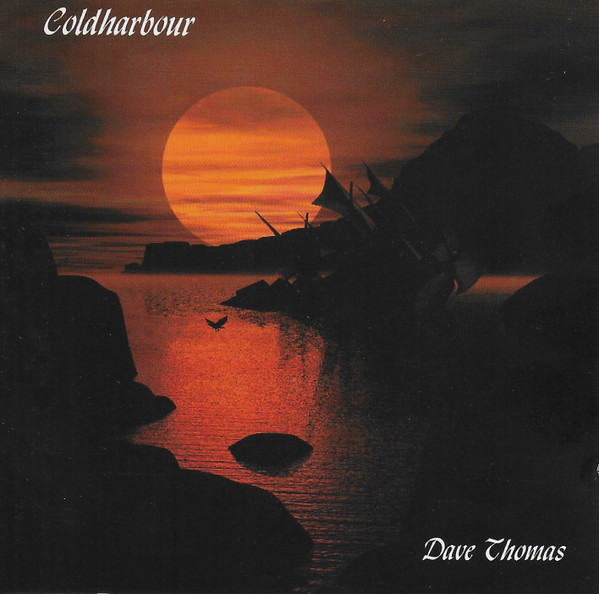
Two more albums followed….
‘Coldharbour’ took many years to complete and was finally released in 2004. I had turned my attention right back to the blues once again and produced two albums in quick succession. The first of these was ‘Blues For Otis,’ which was recorded at my old farm in Norfolk using my daughter Jess’s standup Bechstein piano. It features me on vocals and harmonica and the world-class blues and boogie piano player, James Goodwin. We recorded 22 tracks in one day, 14 of which survive and are featured on the album, which is a tribute to my favorite bluesman, Otis Spann, the piano player from Muddy Waters’ band.
The second album was ‘Black Dog Boogie’.
Can you elaborate on the formation of Black Dog Boogie?
‘Black Dog Boogie’ was the result of recording a live gig with my band, which featured James Goodwin, together with Steve Jinks on bass and Jason Self on drums. It was recorded live in concert at Norwich Arts Centre.
I released both albums on my record label, Blonde On Blonde Direct, in 2005. Both albums received great reviews and critical acclaim from Blues & Rhythm magazine, a respected specialist blues magazine mostly focused on black American artists. Recognition at last!
You also worked at Shake Down Blues.
Over a 15-year period, as bandleader at Shake Down Blues, I worked with over 40 black American blues artists visiting the UK. This has led to me extending my network widely in the USA. I have made appearances at the Chicago Blues Festival, working with some of Muddy Waters’ band. I recorded an album in Cleveland, Ohio, with the great Chicago-style harmonica maestro Wallace Coleman (whom I first met at Shake Down Blues in the UK). I have also recorded with Shar Baby from Birmingham, Alabama, and Terry ‘Harmonica’ Bean from Pontotoc, Mississippi. A compilation album is due for release in 2024.
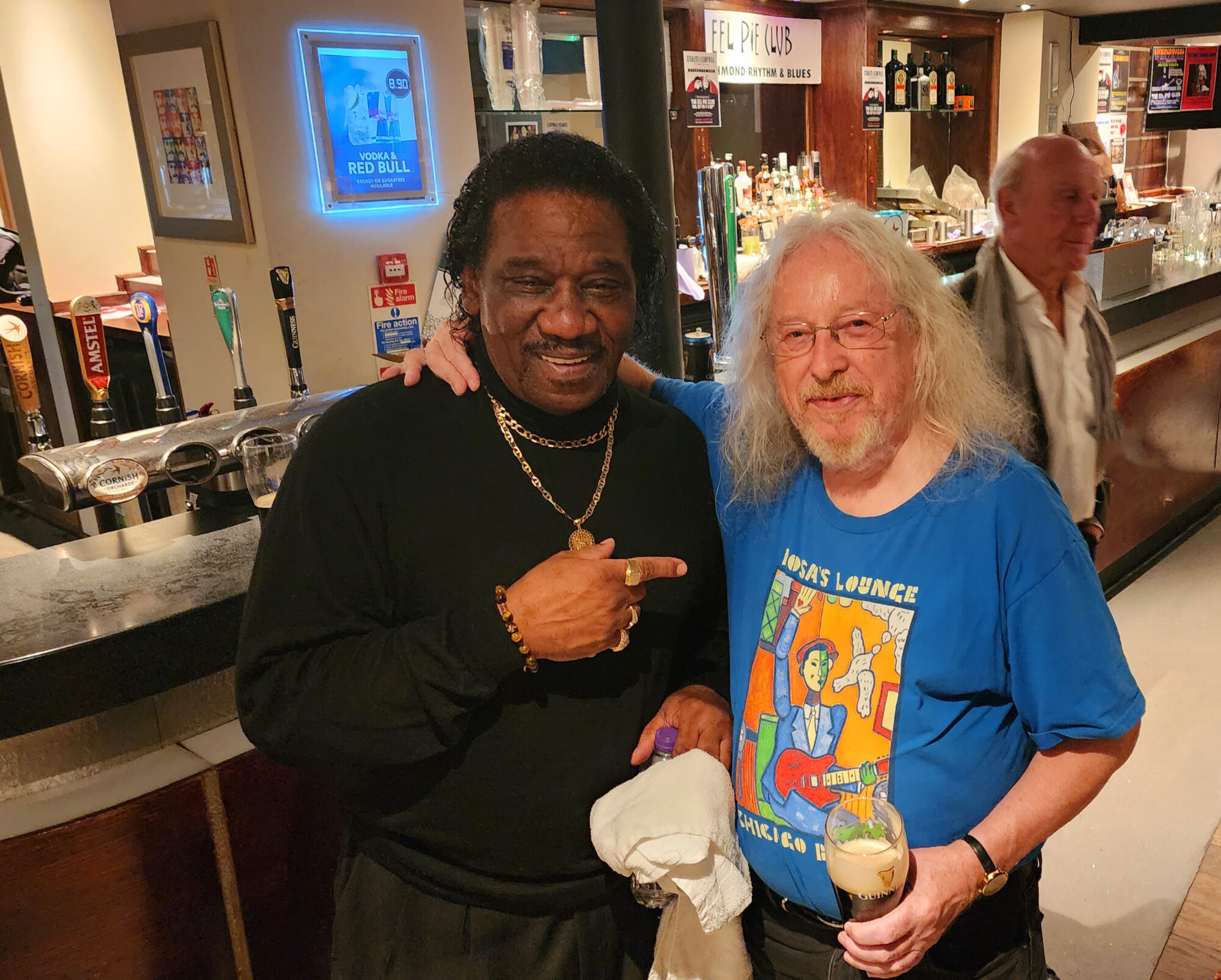
Is there any unreleased material by Blonde on Blonde or related projects?
There has long been a rumor that a fourth Blonde On Blonde album exists. This might be because of the multitude of re-releases of the albums in their original form and as parts of compilations, all on various different labels worldwide. Record companies work in strange and mysterious ways, and I don’t feel I can comment further.
It could be argued that my album ‘Coldharbour’ could be construed as the missing fourth Blonde On Blonde album. At one time, I was considering re-issuing it as a Blonde On Blonde album, but because it really is very much my own work, I decided against doing that.
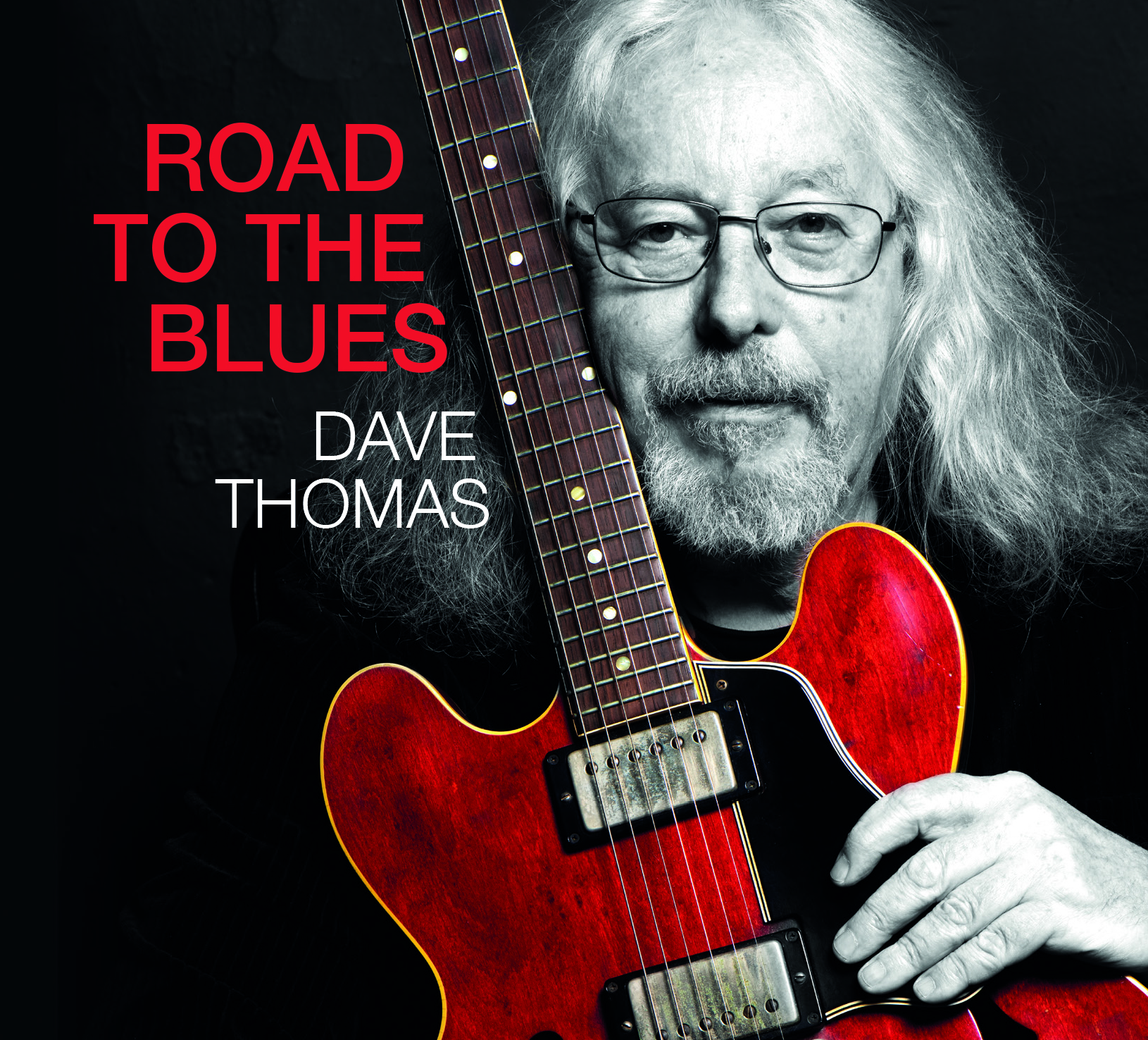
Looking back, what was the highlight of your time in the band? Which songs are you most proud of? Where and when was your most memorable gig?
Over three years on the road with Blonde On Blonde was formative. There were many great gigs, and I have many fond memories. The most obvious highlight would have been the day we played two festivals back to back: the first in Keighley, where we were supported by Fleetwood Mac, then went on to Clitheroe Castle, where we were supported by Barclay James Harvest and Roy Harper was top of the bill. One of my favorite gigs was at the tiny club called The Builder’s Exchange in Huddersfield. The atmosphere was electric, and the Yorkshire lasses warm and welcoming! My early apprenticeship was served with Blonde On Blonde, but the favorite songs I have written have come along much later. I am very proud of all the songs on ‘G&T,’ the album I wrote with Dave Greenslade, and I am also very pleased with all the original songs on my latest album ‘Road To The Blues’.
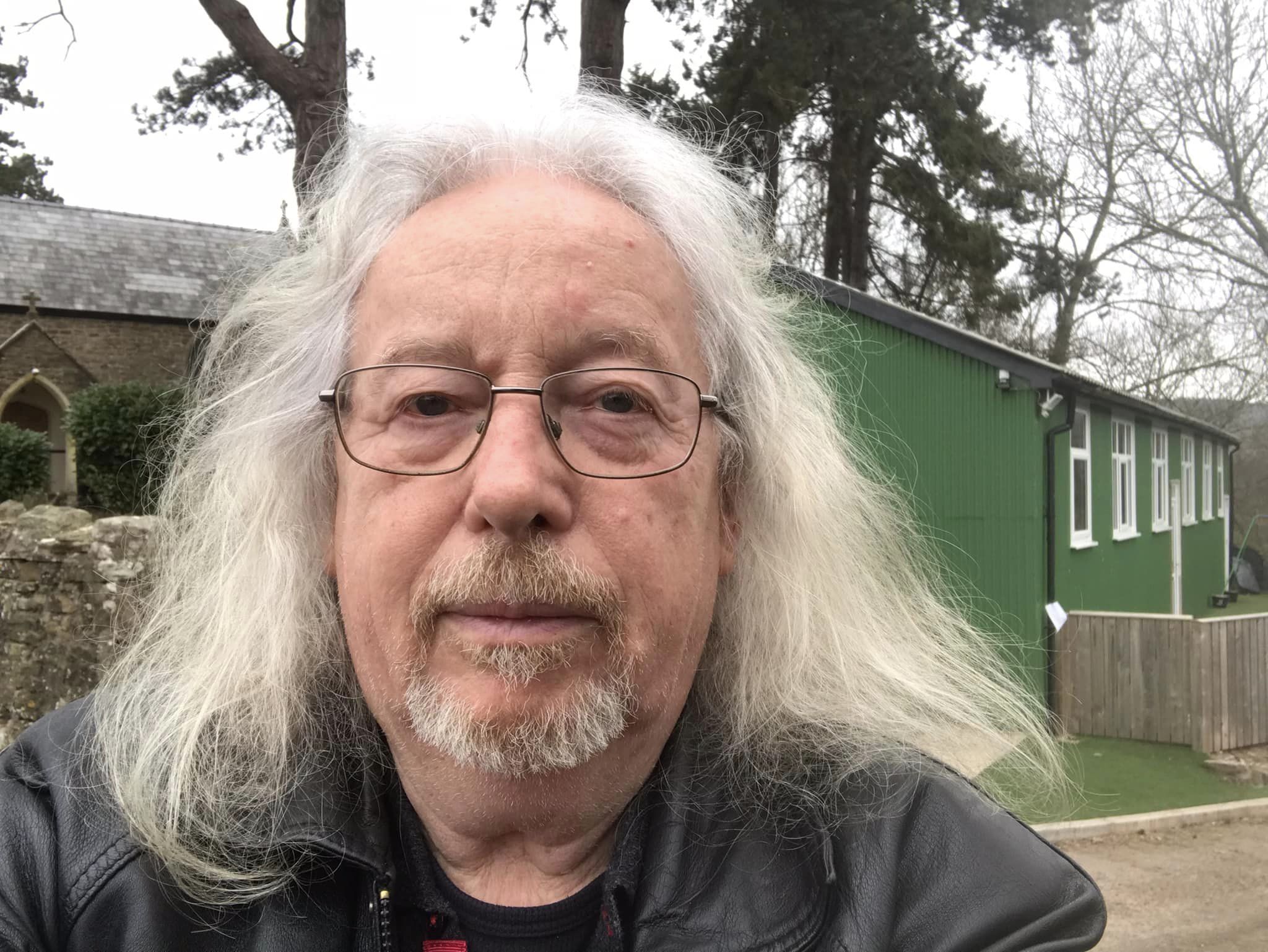
Thank you for taking the time to speak with me. The last word is yours.
I believe I now understand the true meaning of the clichéd phrase “you’ve got to pay your dues if you want to sing the blues”. Even at this late stage, I know there are more albums I need to release. I’m currently working on a couple of projects. I’ll be putting out a compilation album in 2024 featuring tracks from previous albums where I’ve collaborated with other artists from the UK and the USA. Dave Greenslade and I have already started working on our second album. The other new project will be a book about my life in all its facets.
These past three years have been very rewarding. In 2021, I released ‘One More Mile,’ which reached the Number One slot in the Roots Music Reports UK Top 50 Album Chart. It also made it into the Top Ten in the Blues and Contemporary Blues USA Album Chart. In 2022, I released ‘Road To The Blues,’ which achieved similar success on both sides of the Atlantic. I also signed my second record contract and released the rock album ‘G&T’ in 2022. In 2023, I was announced as the winner of the Independent Blues Award for Best Contemporary Blues Band.
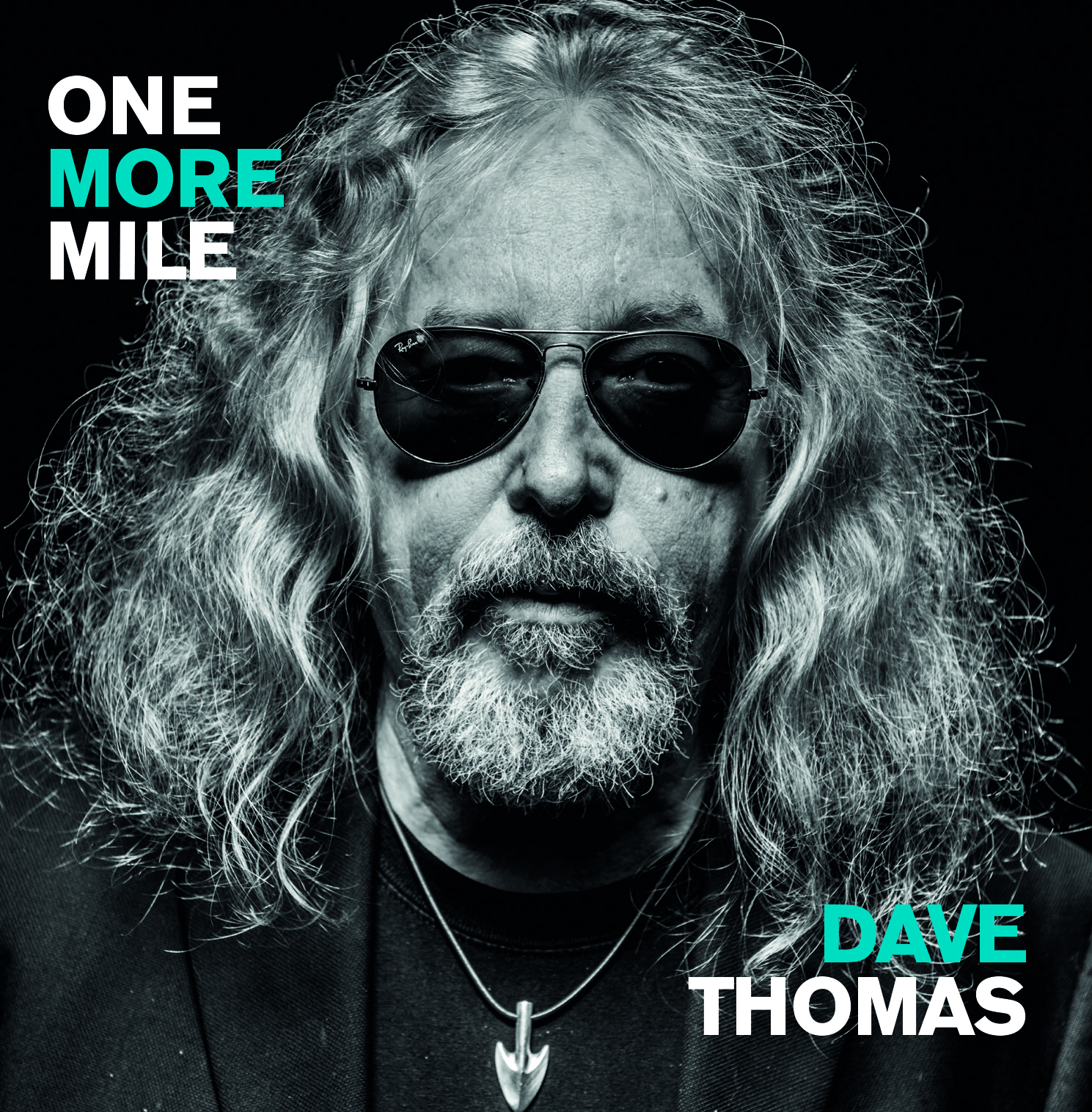
I am currently planning my touring schedule for 2024 and 2025 for both solo and band performances. I like to stay busy and keep moving down my blues road.
Additionally, there will be a couple of new blues albums. Watch this space!
Klemen Breznikar
Headline photo: Blonde on Blonde promotional shot

